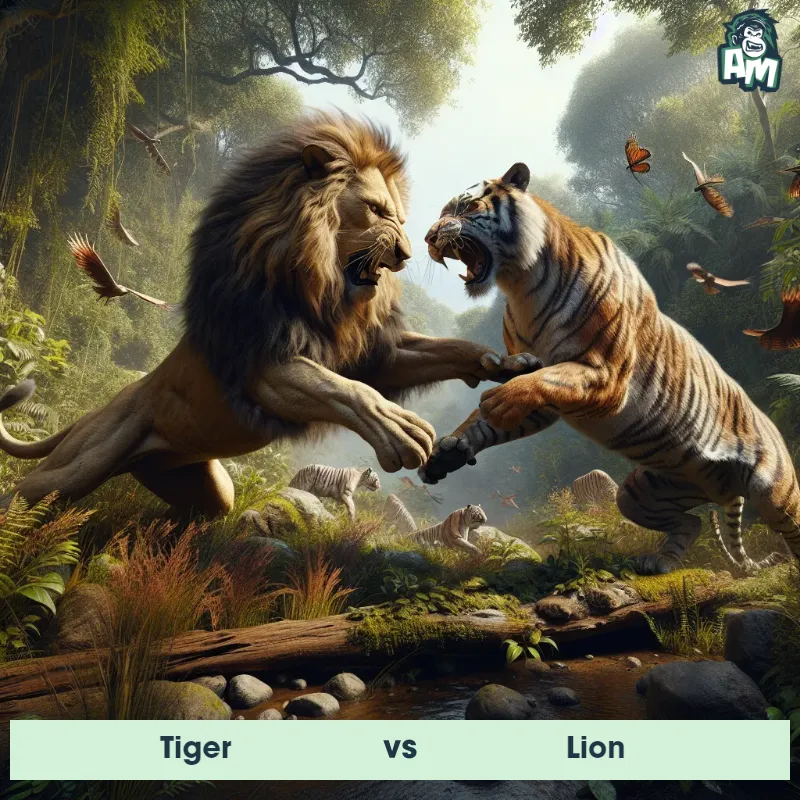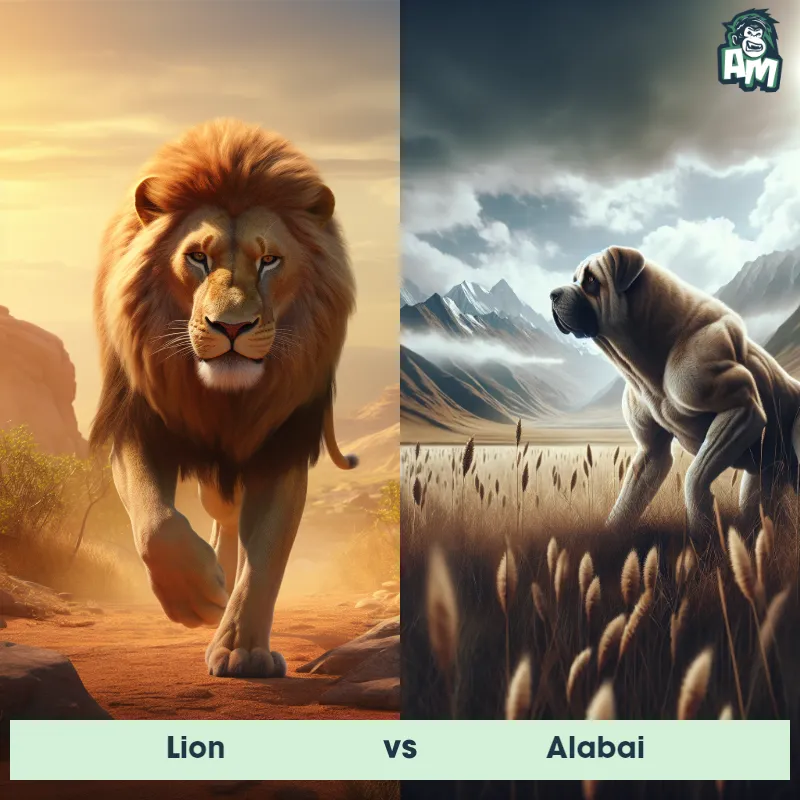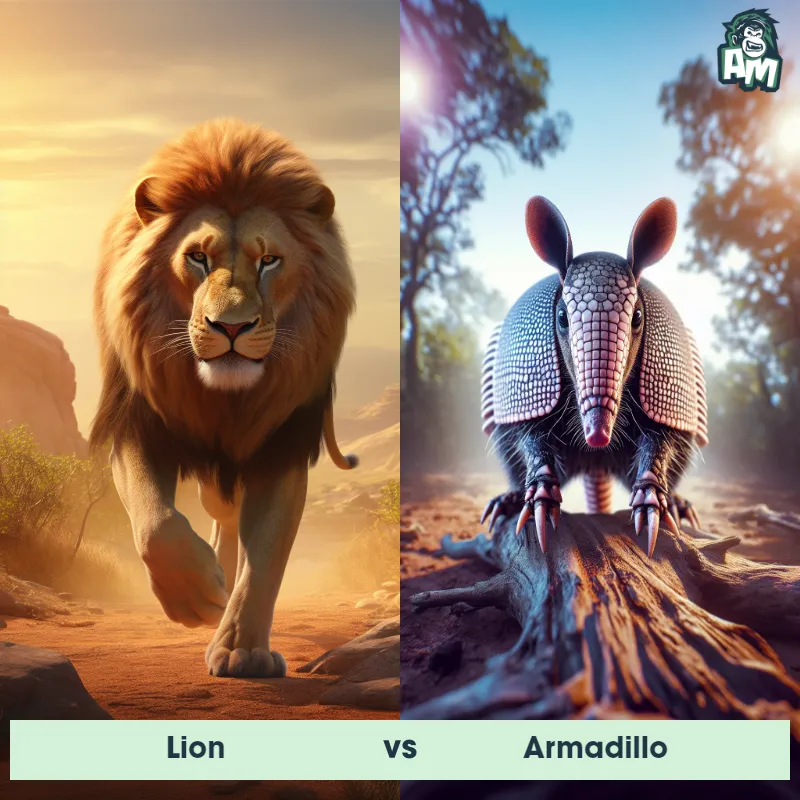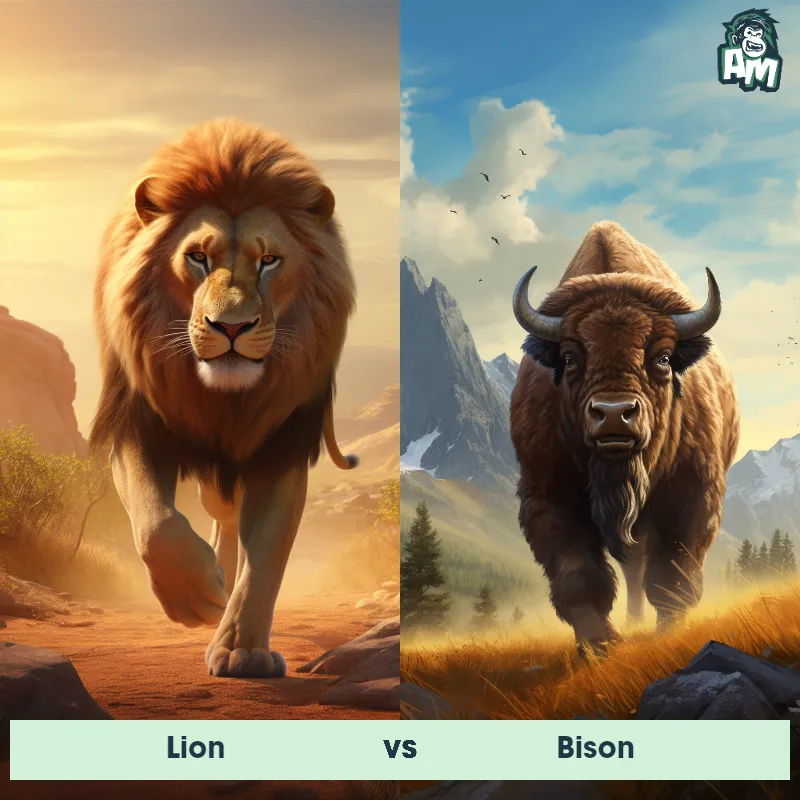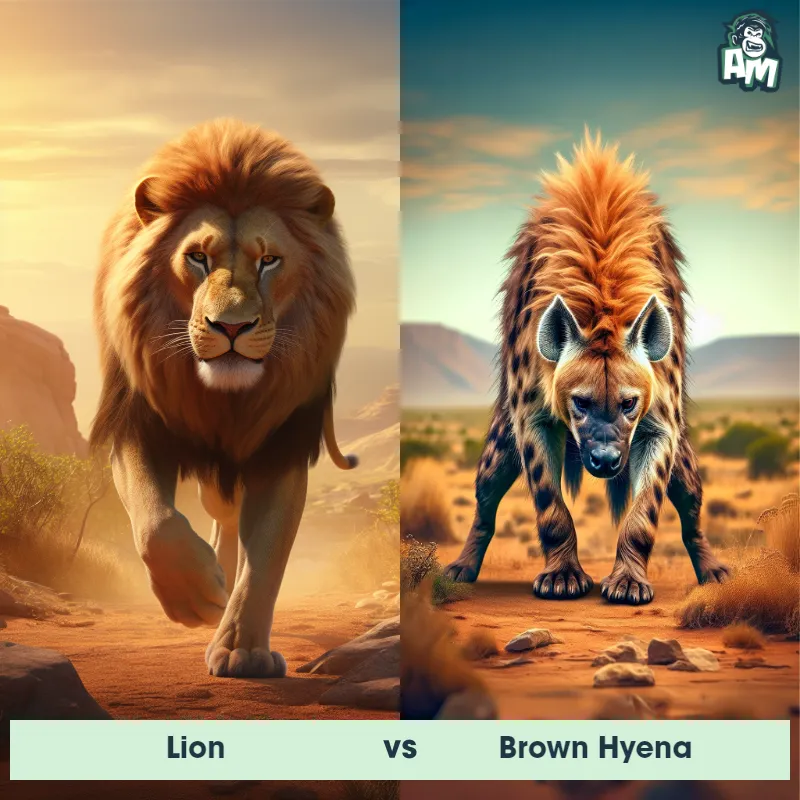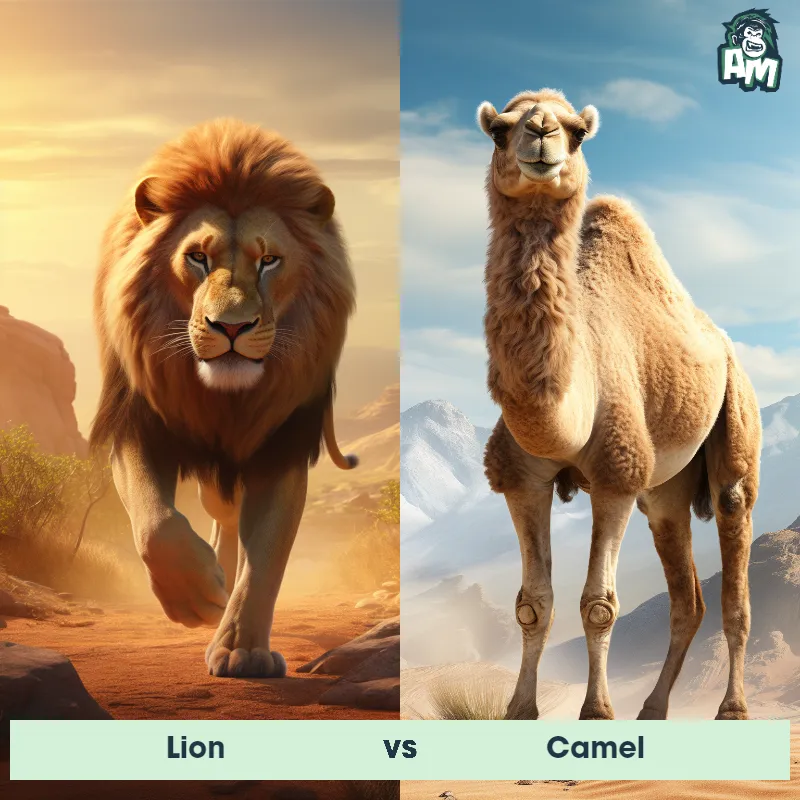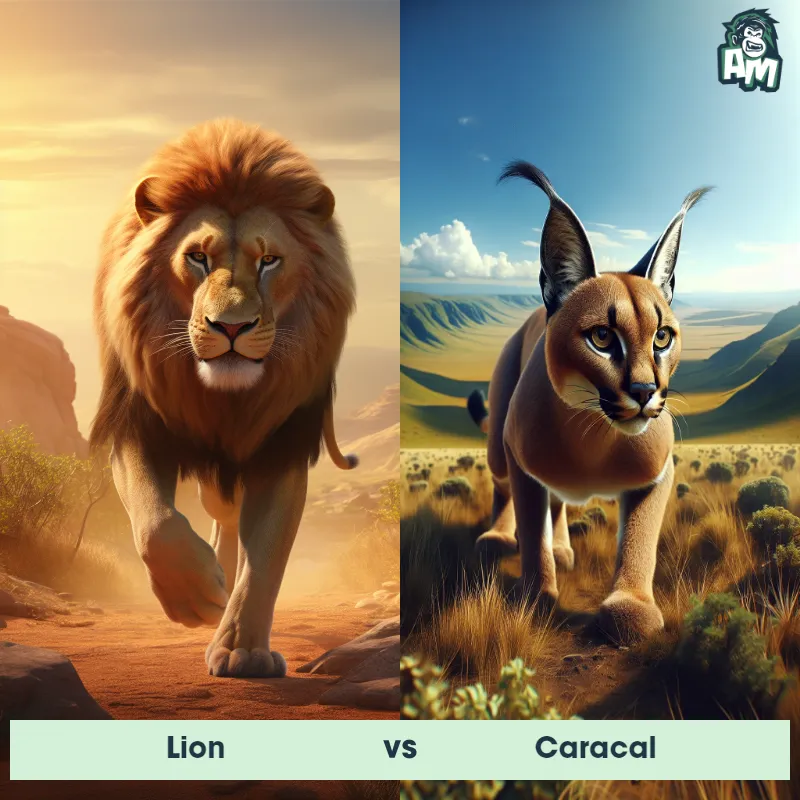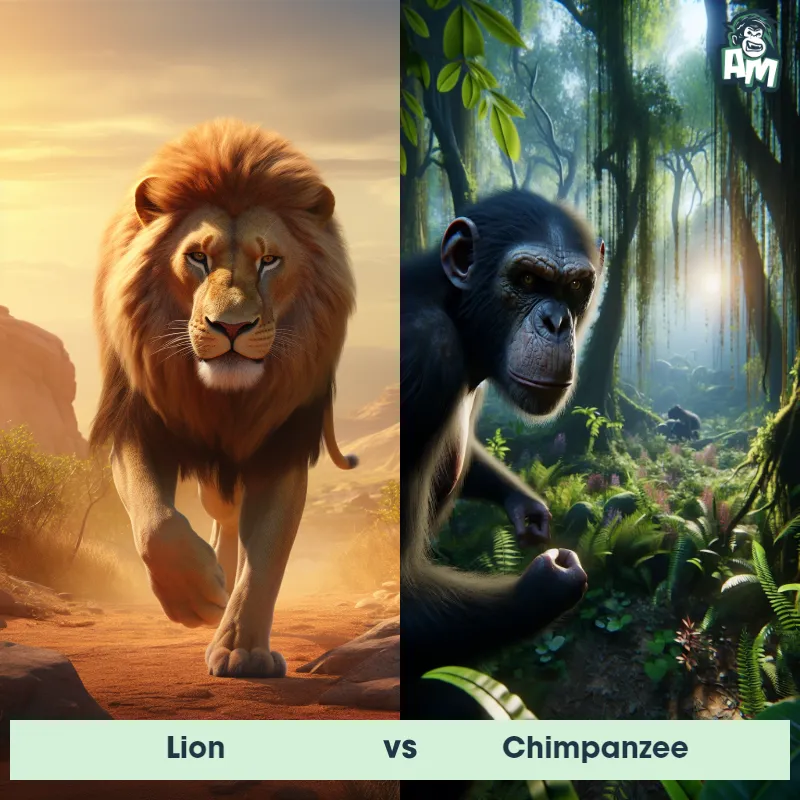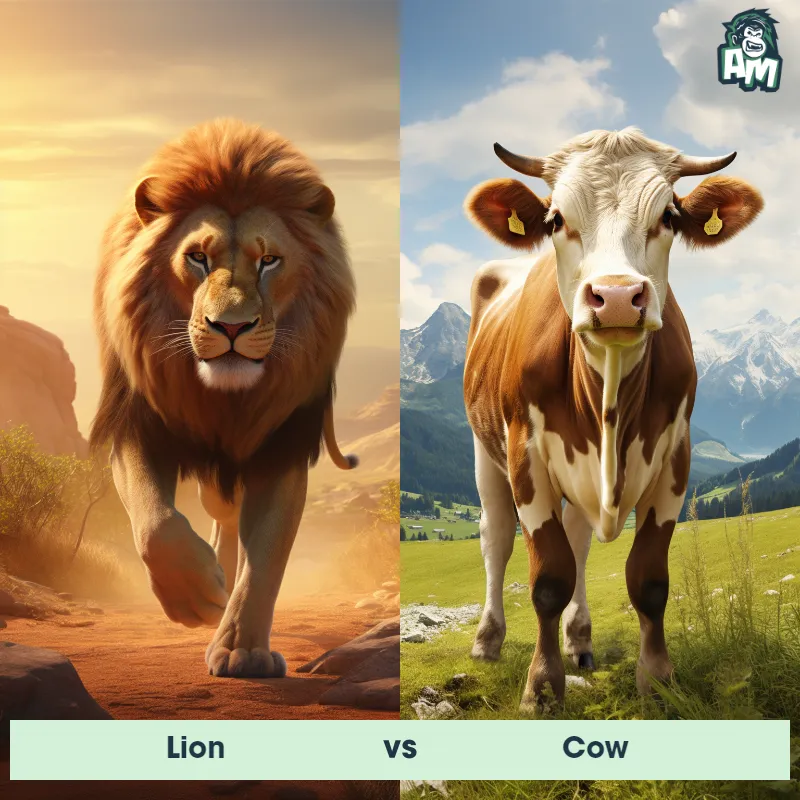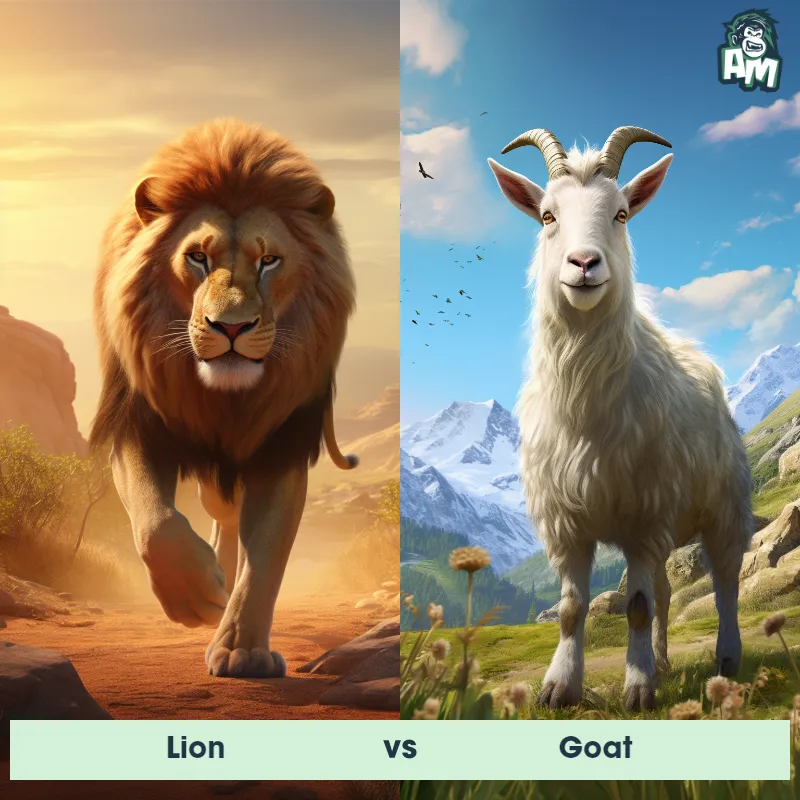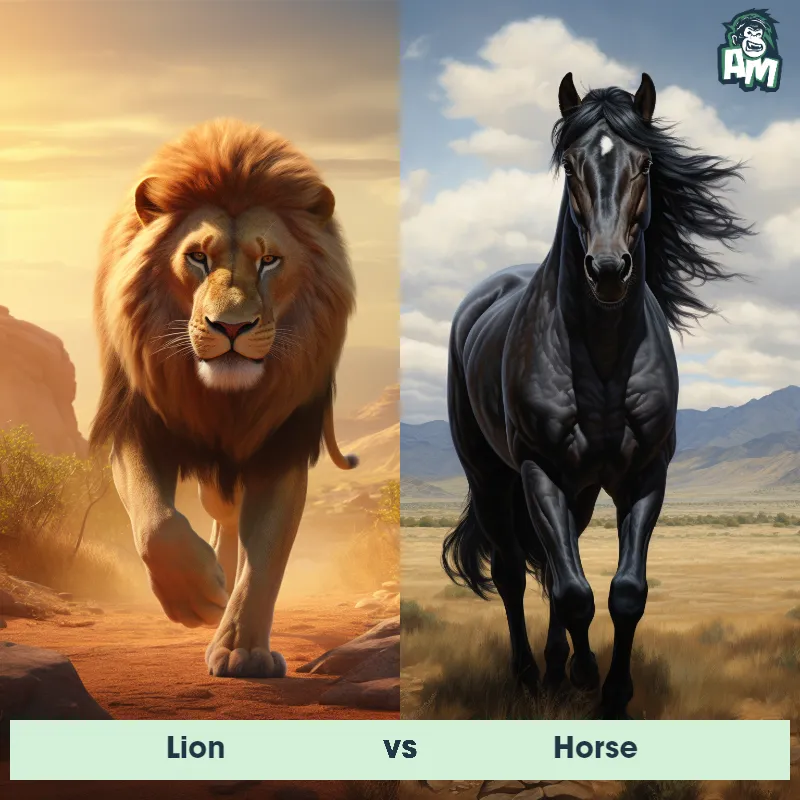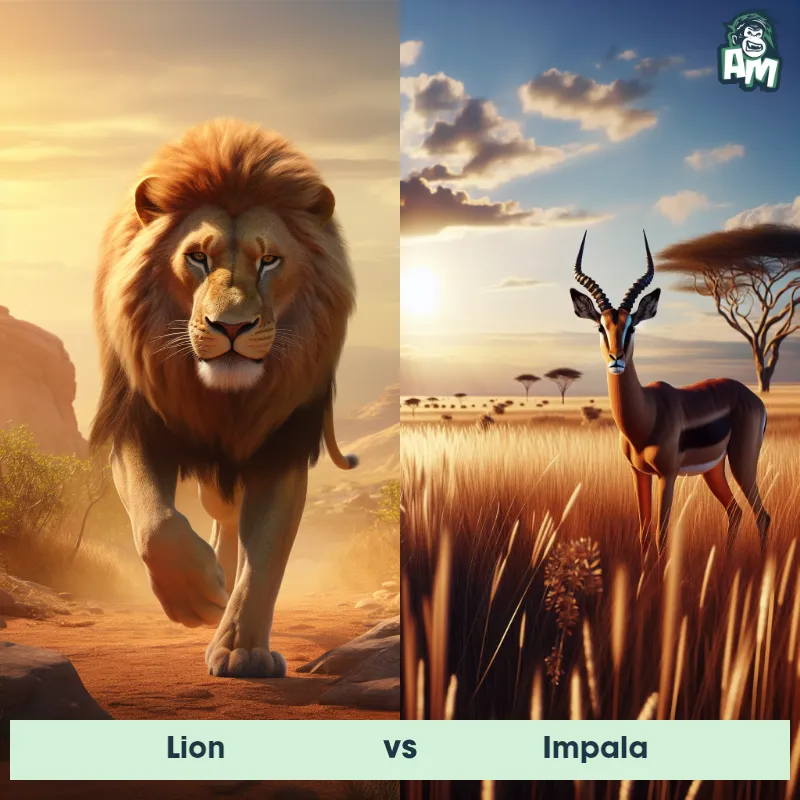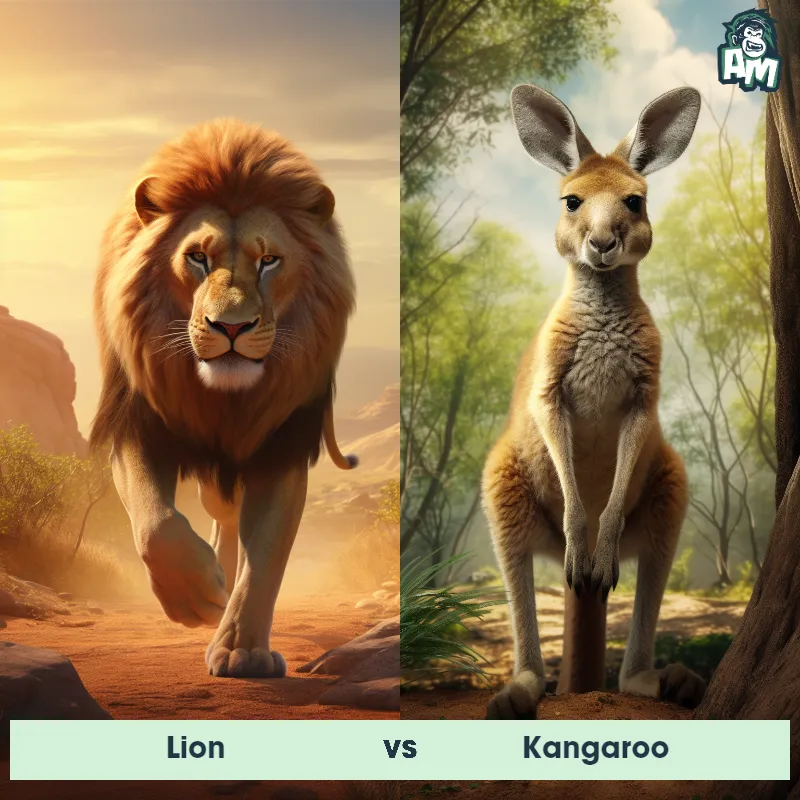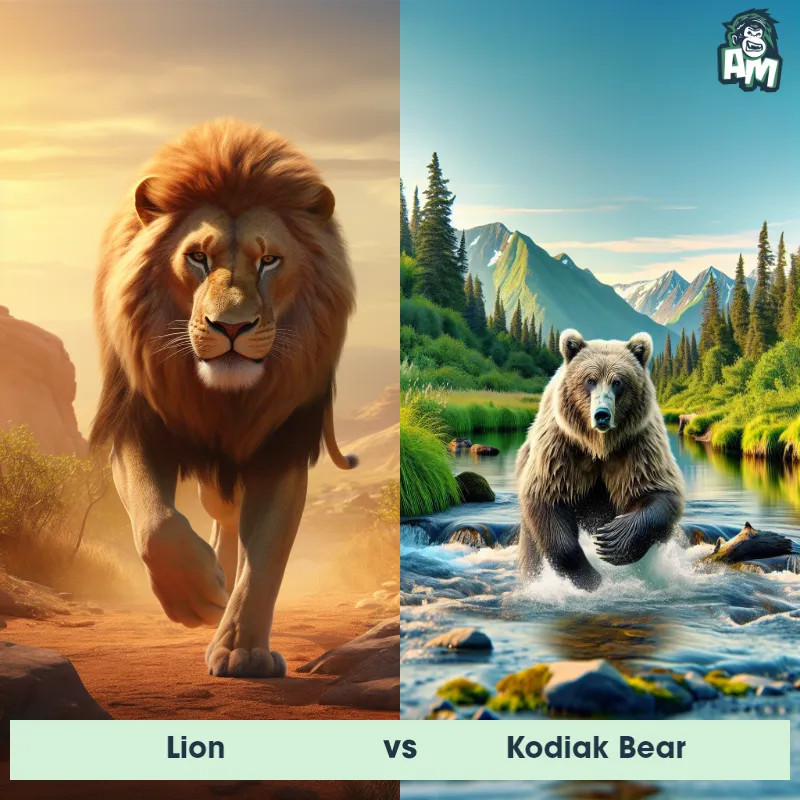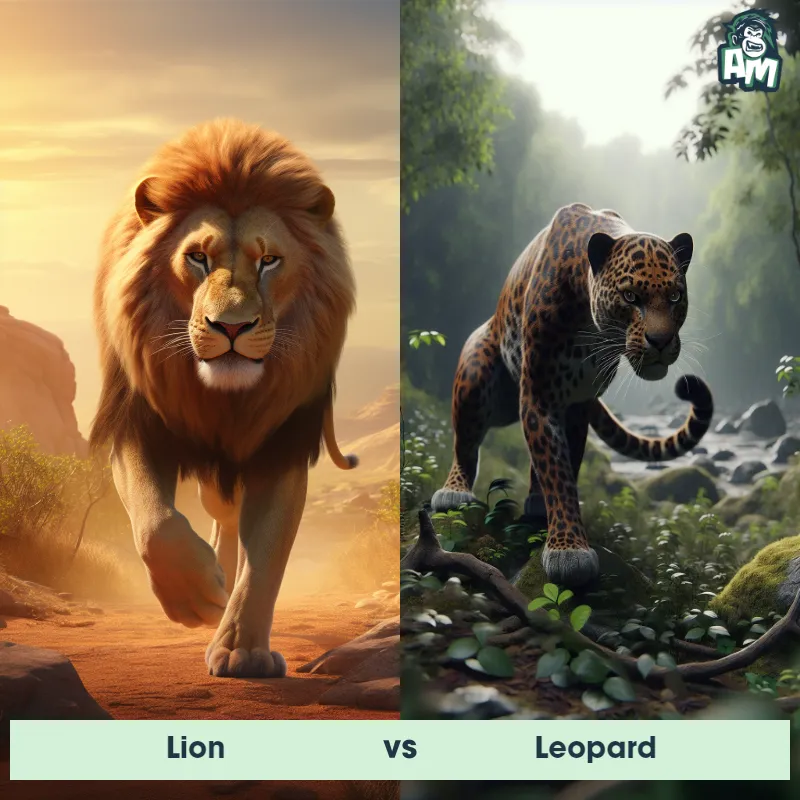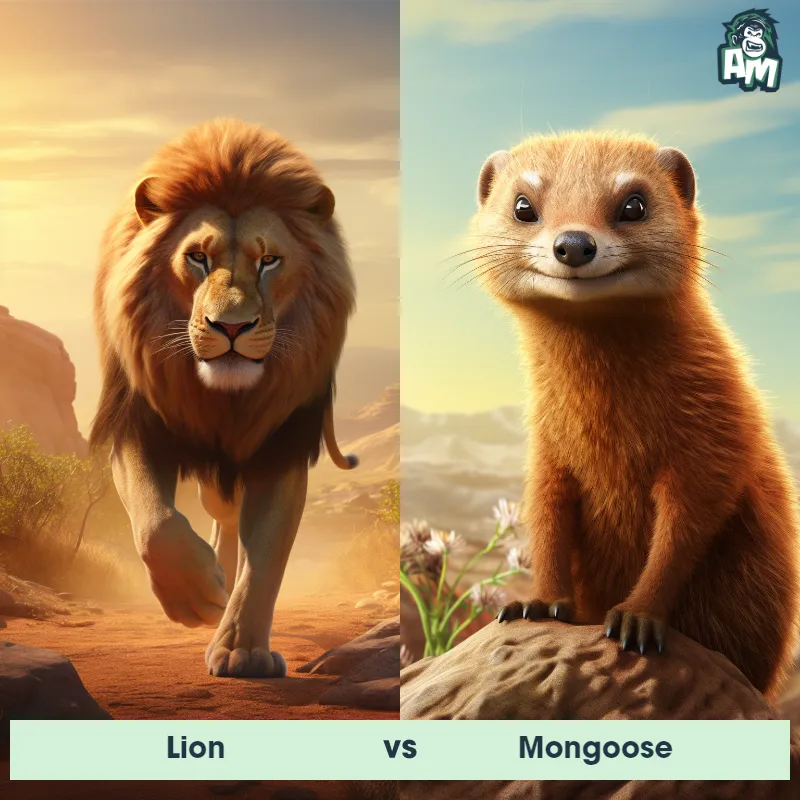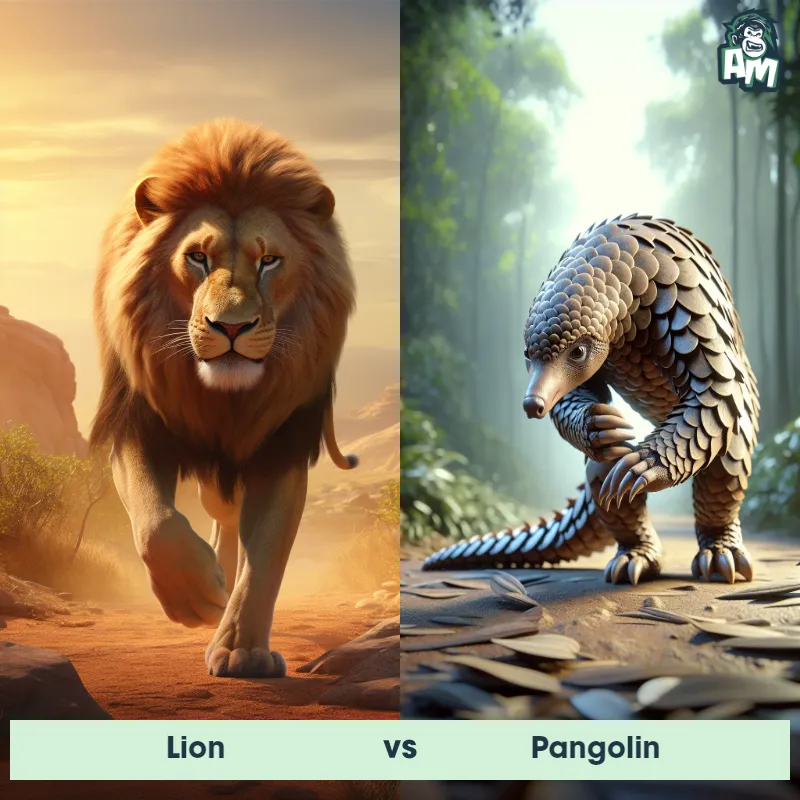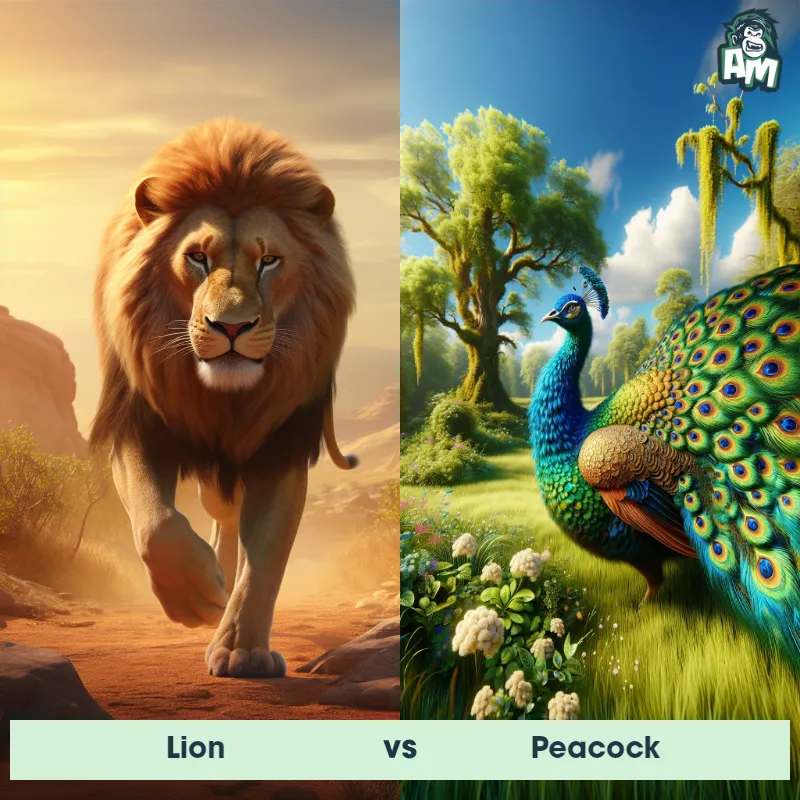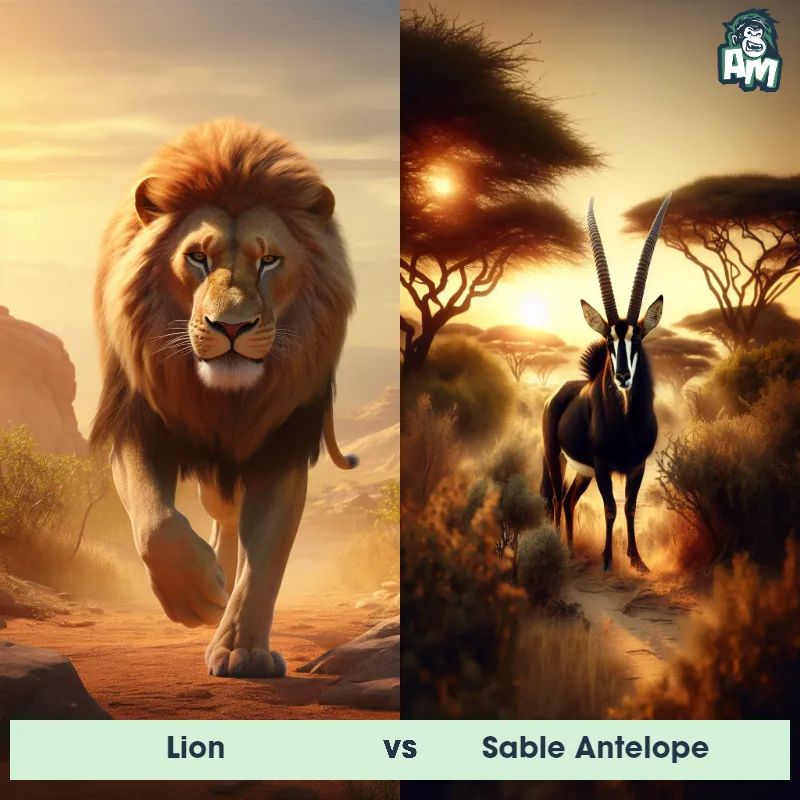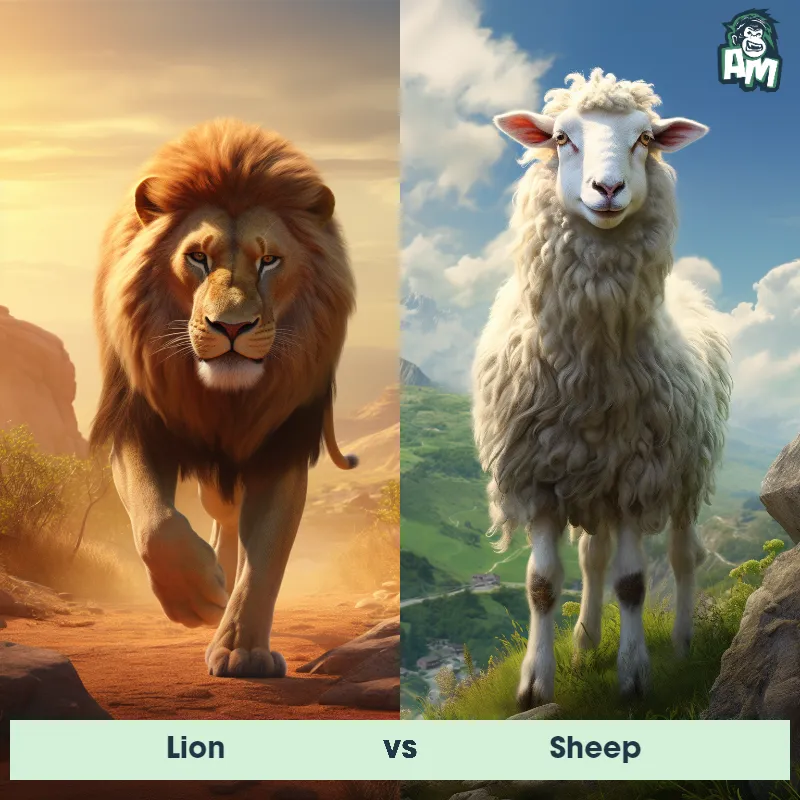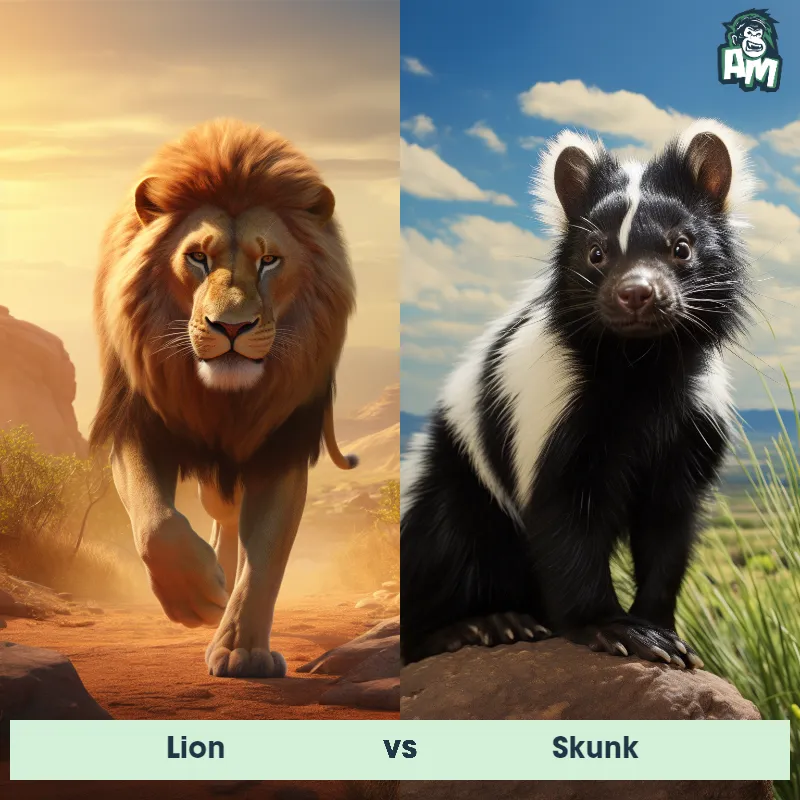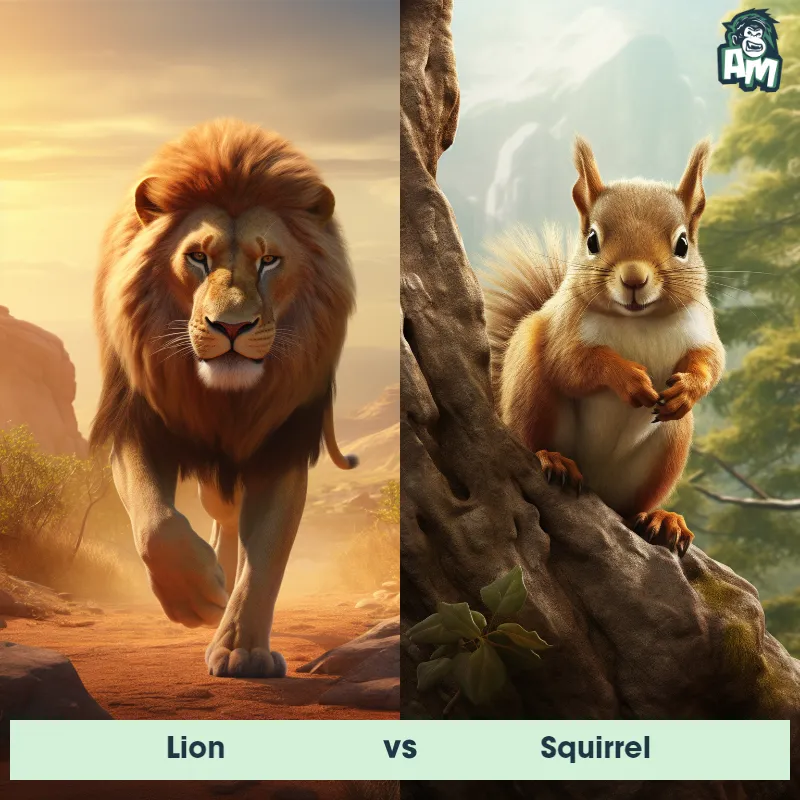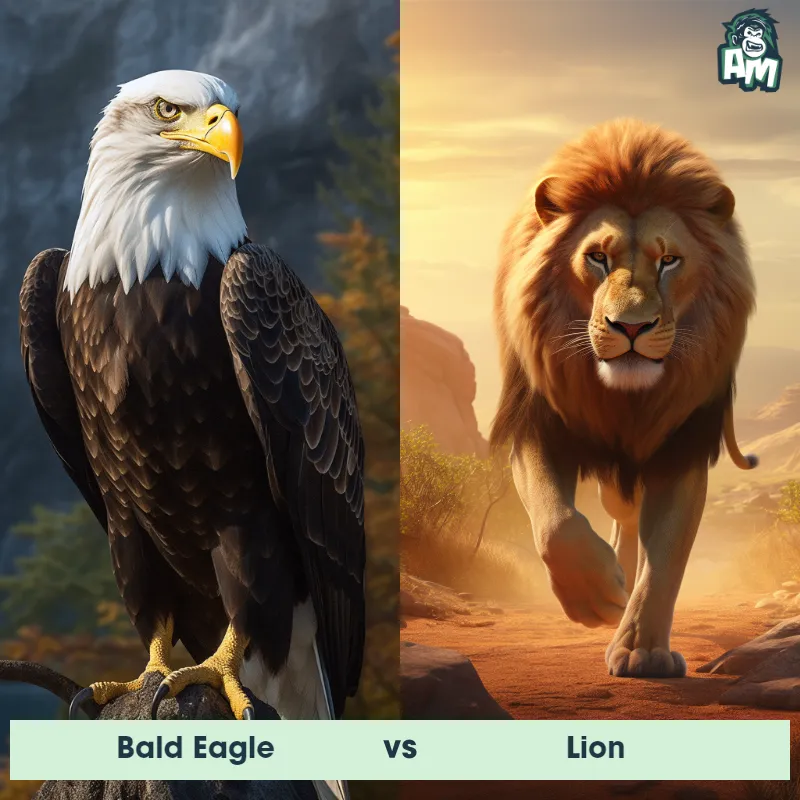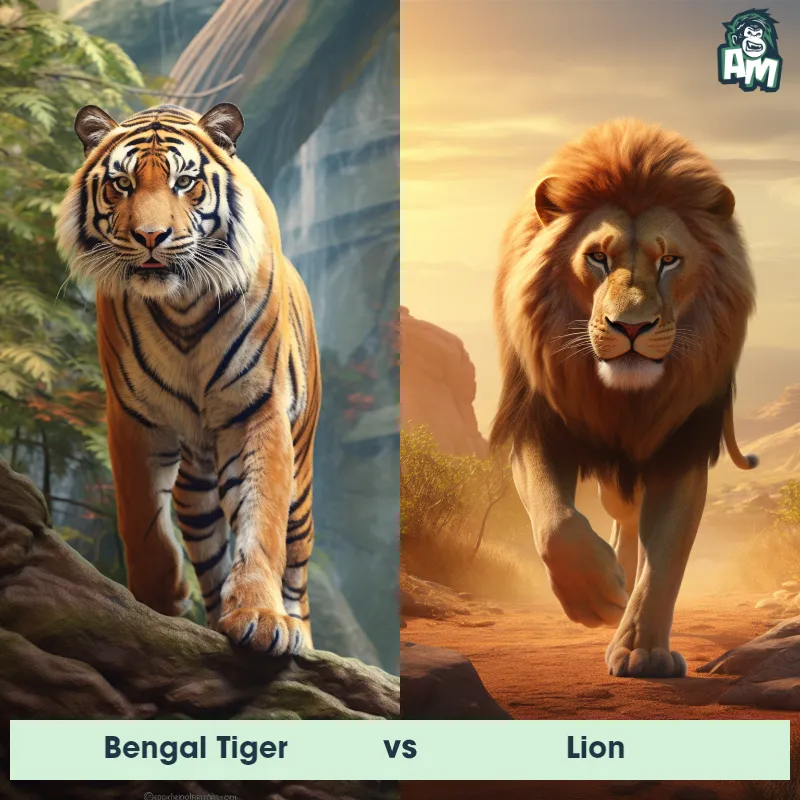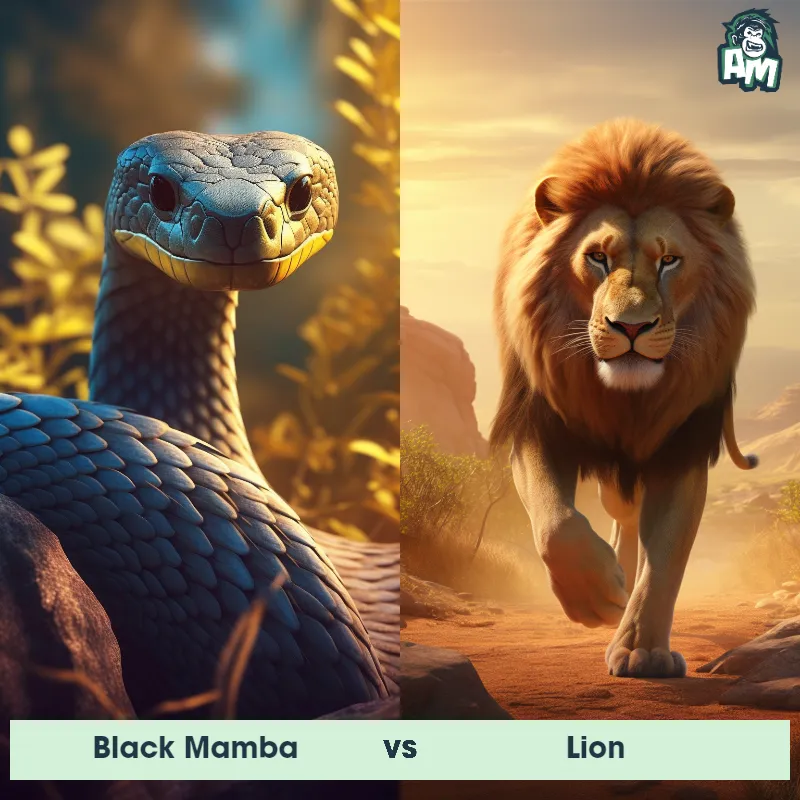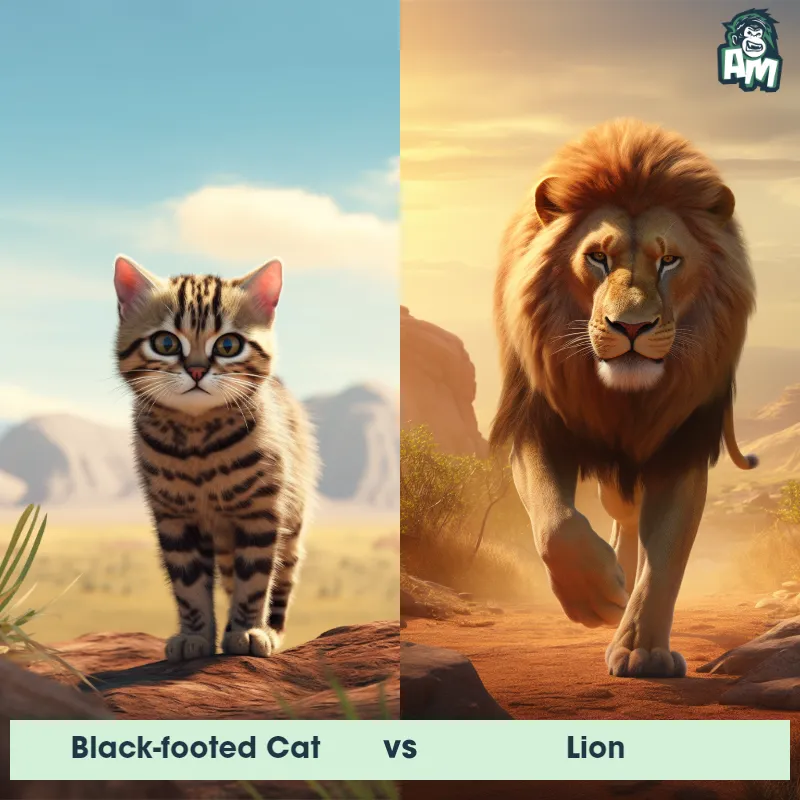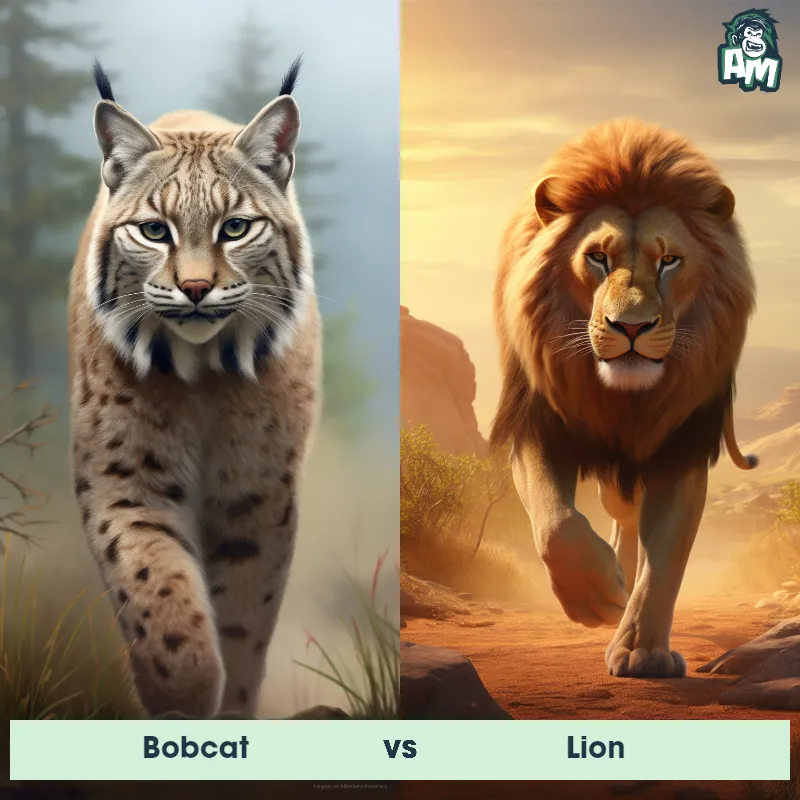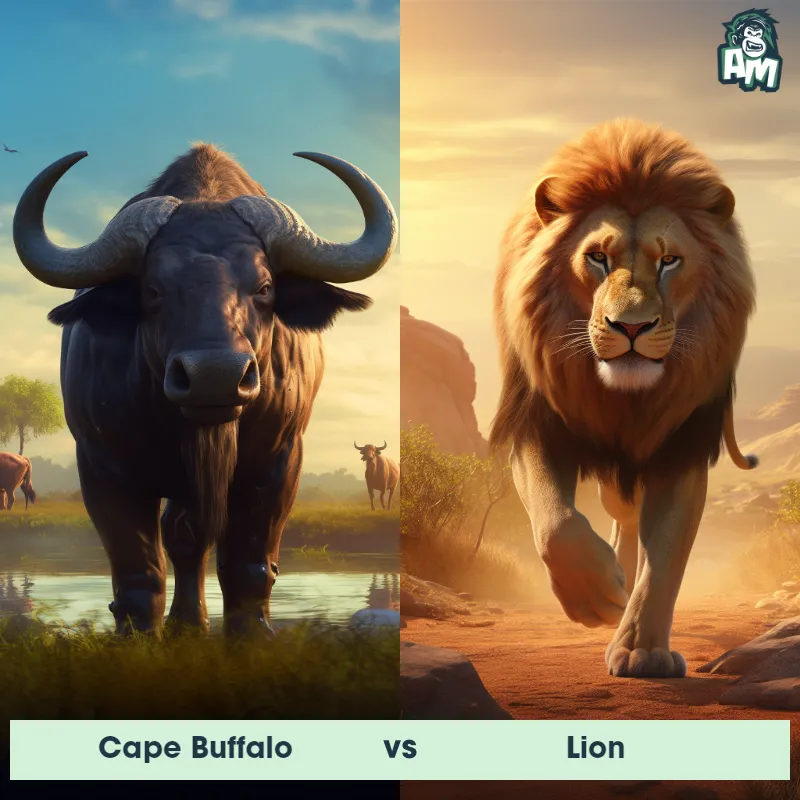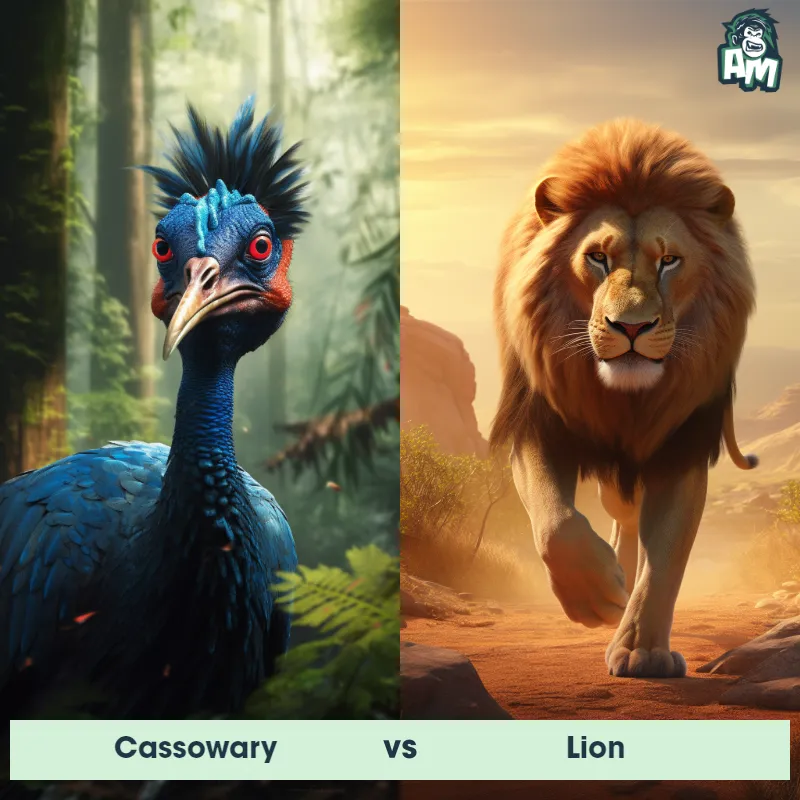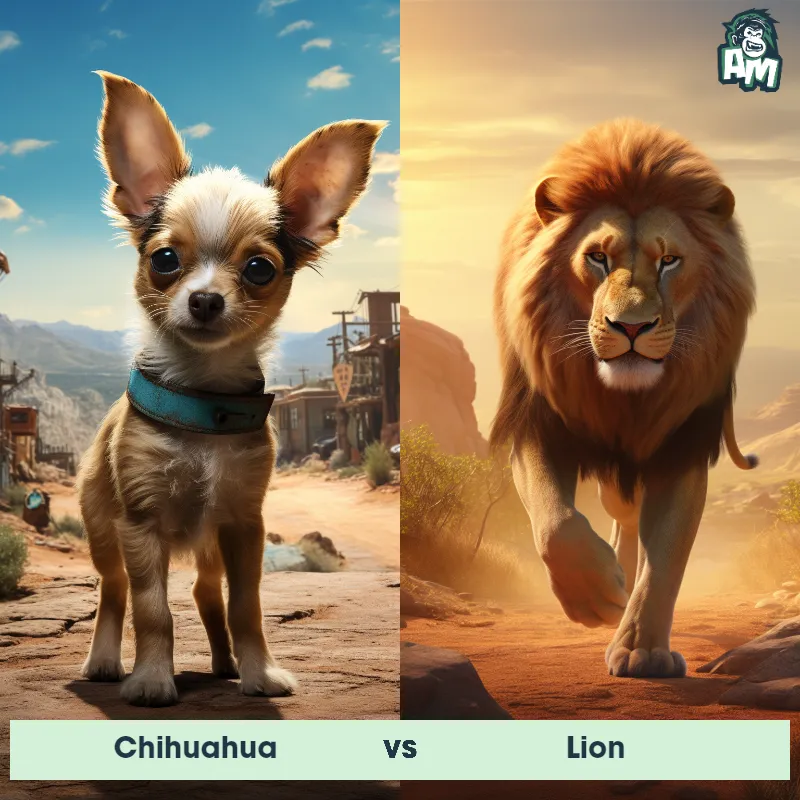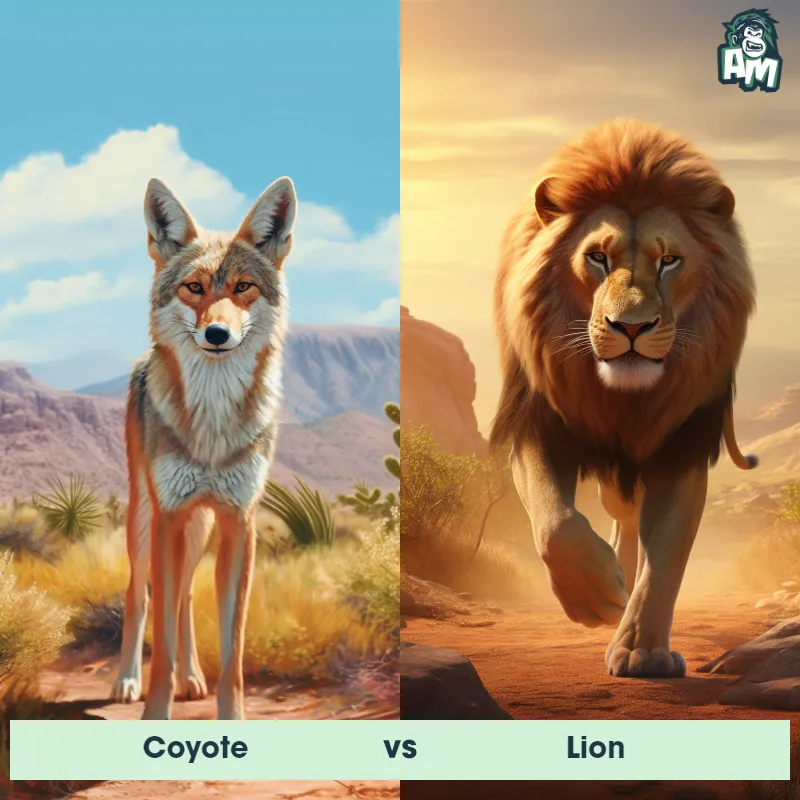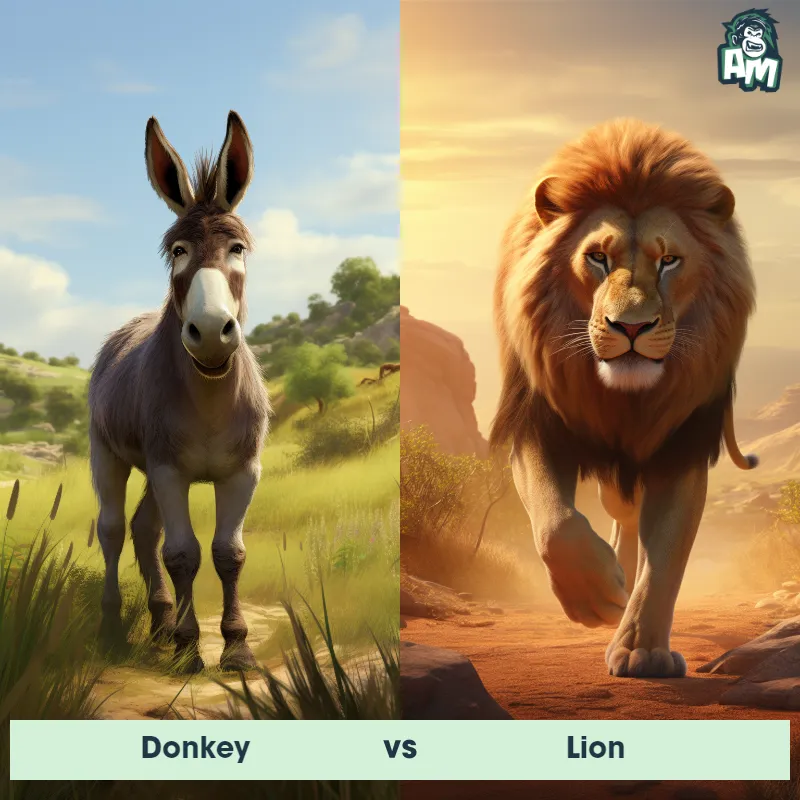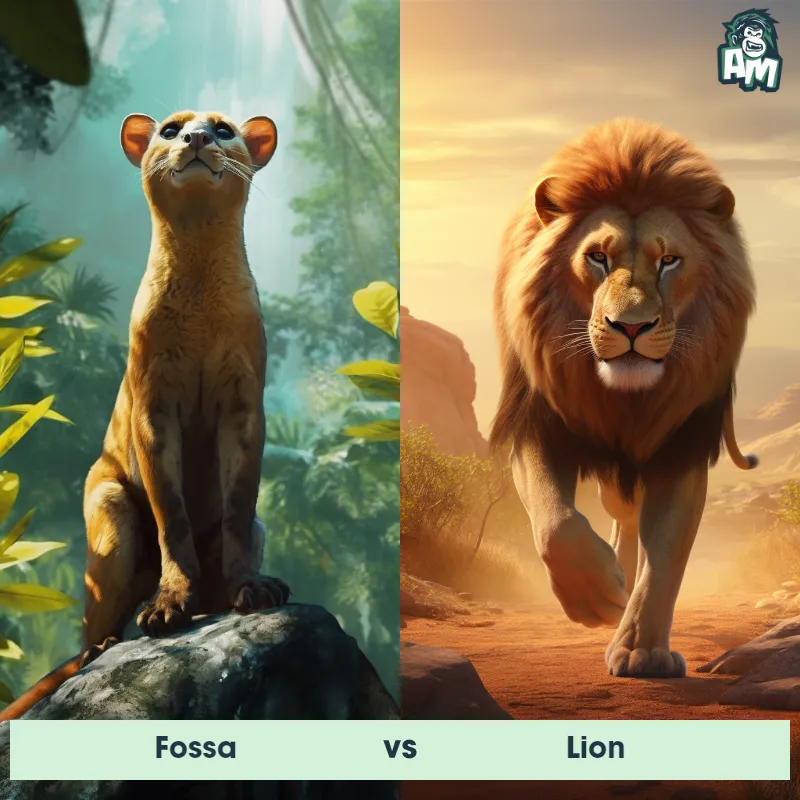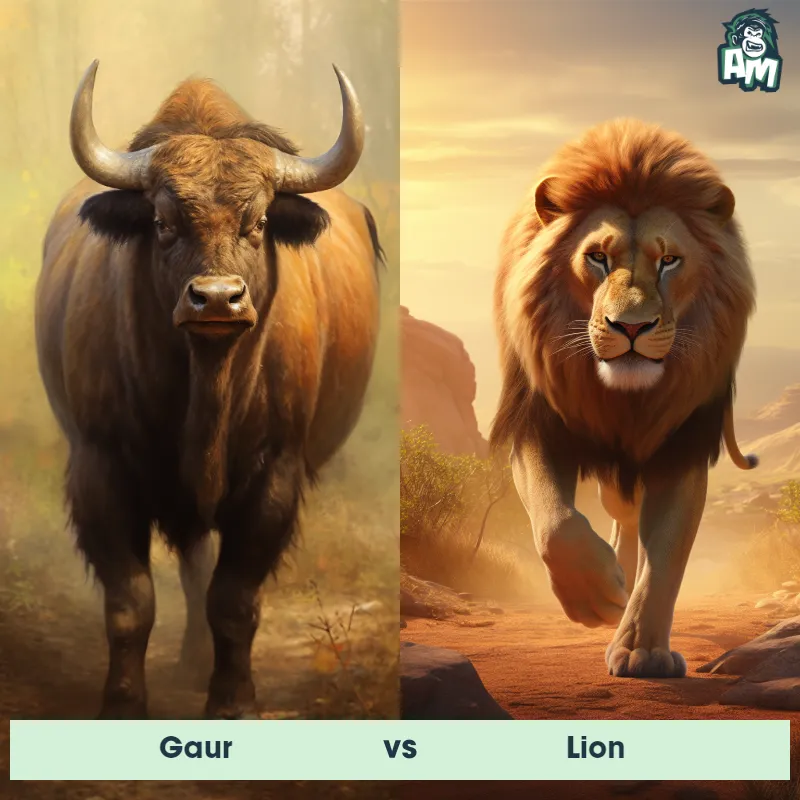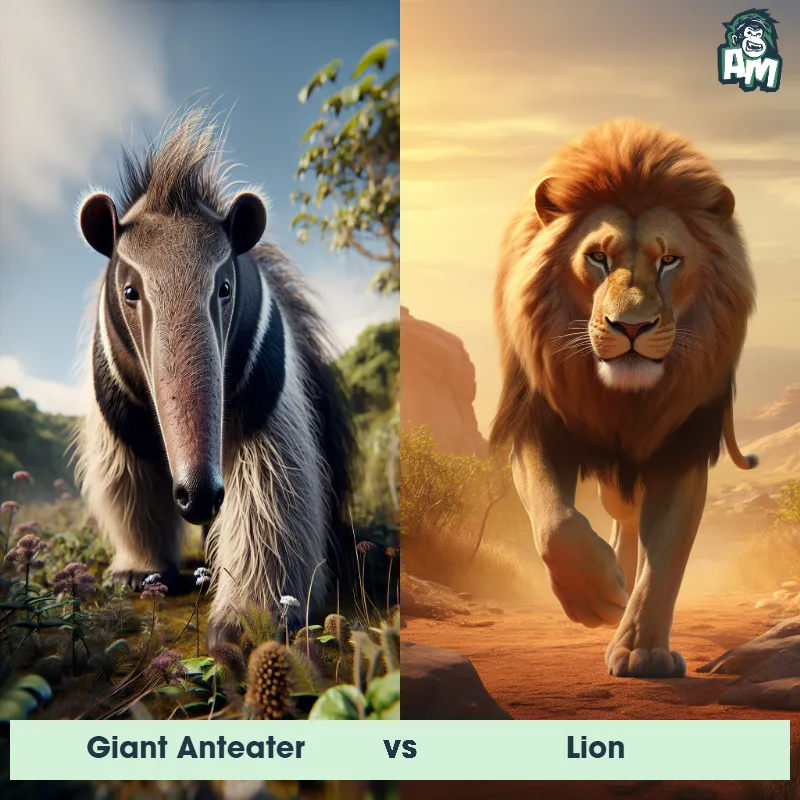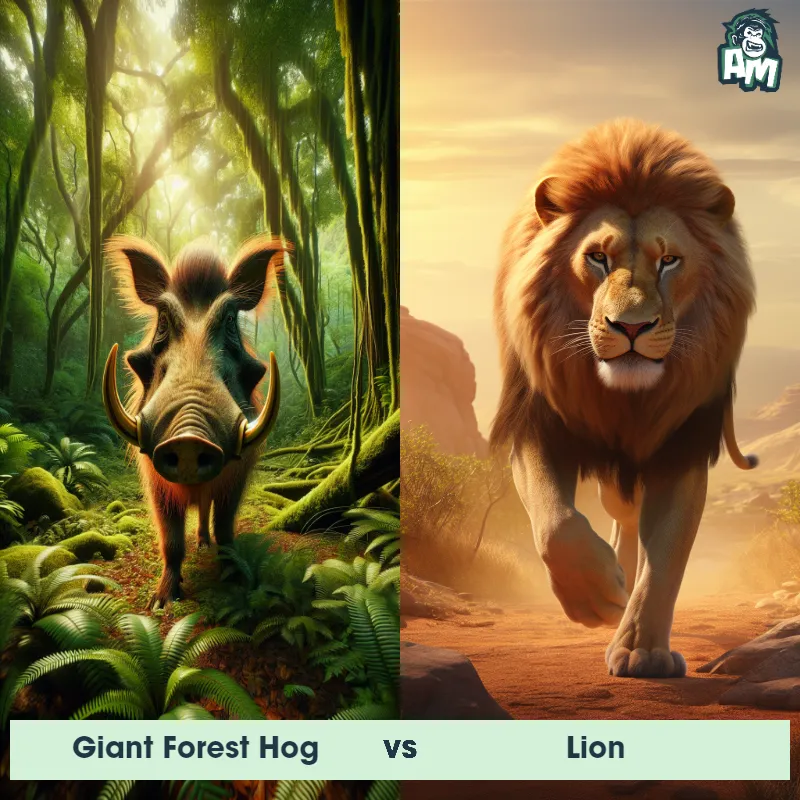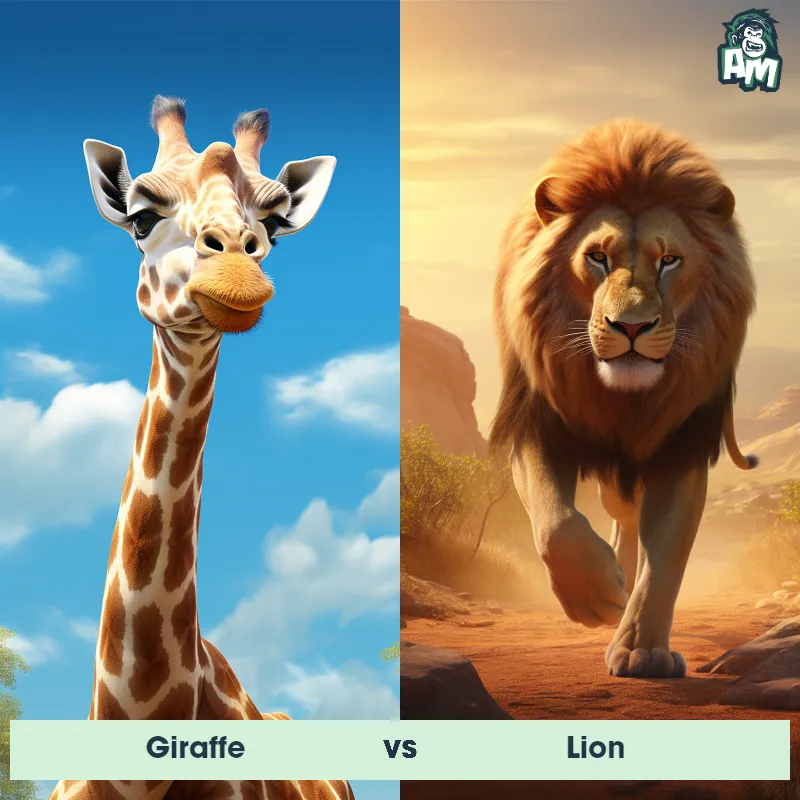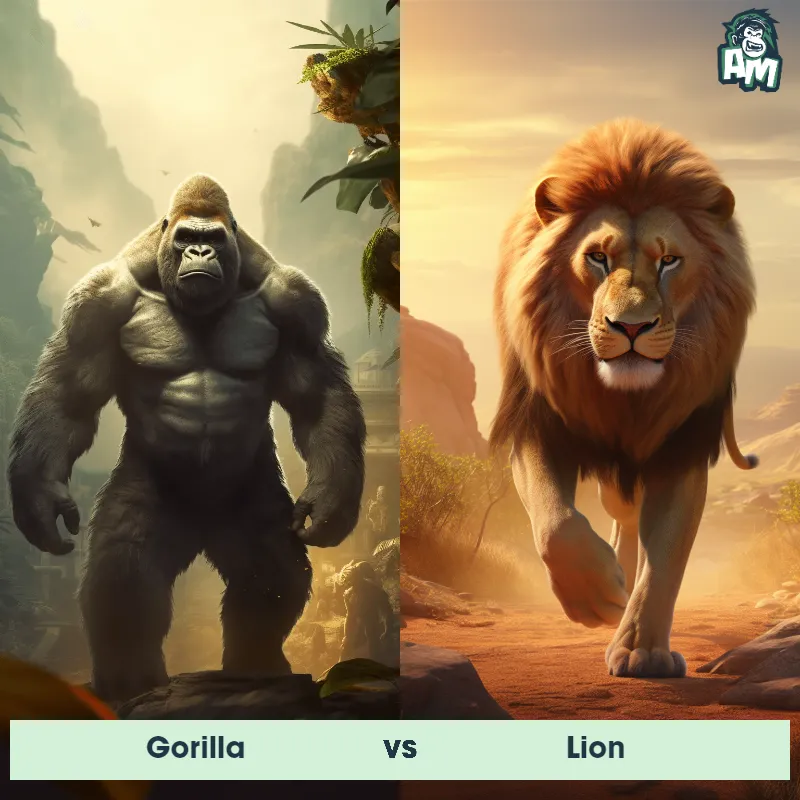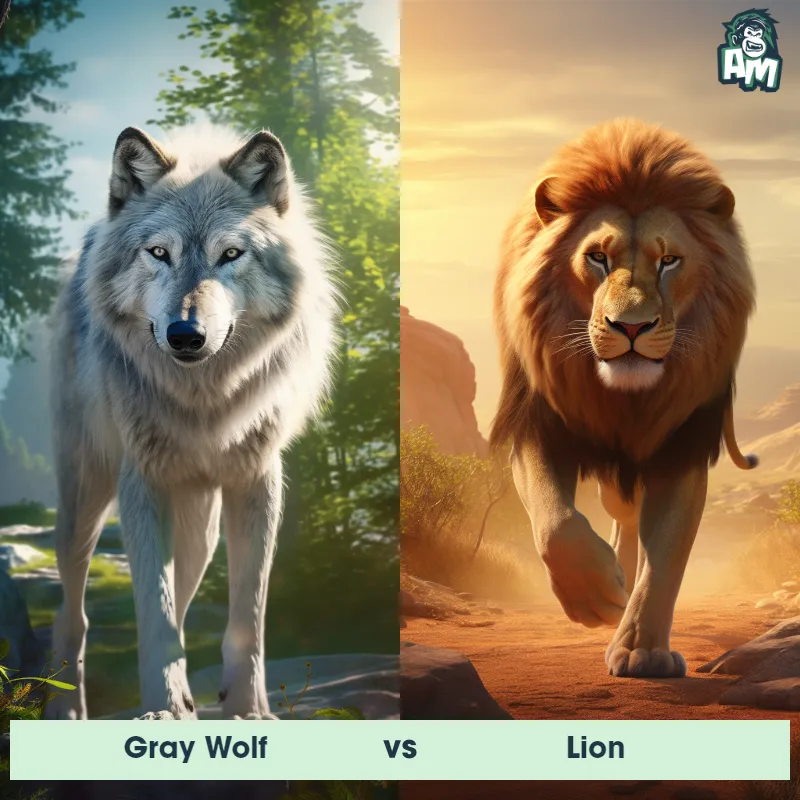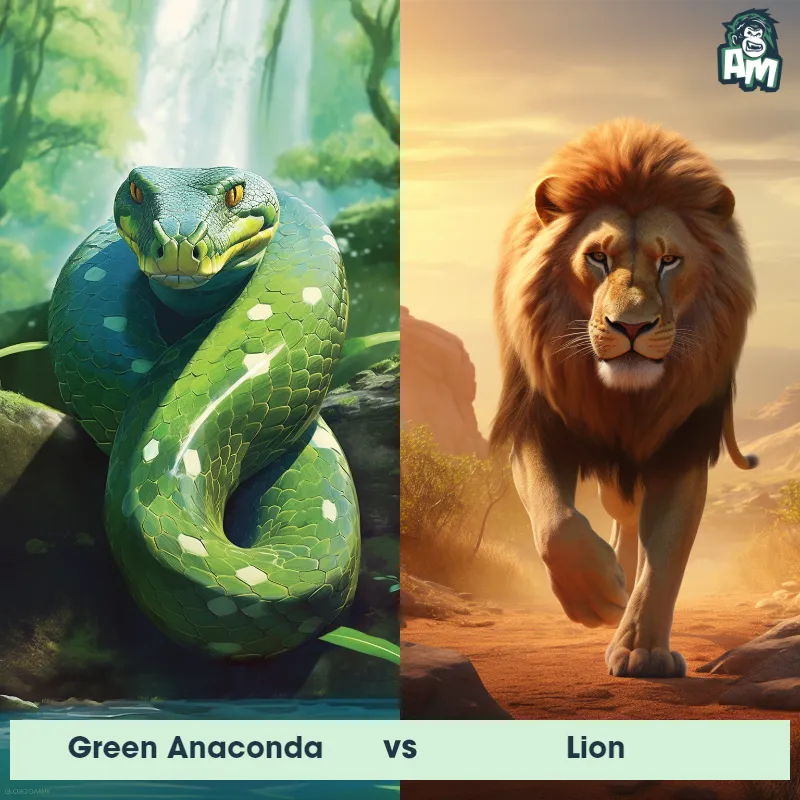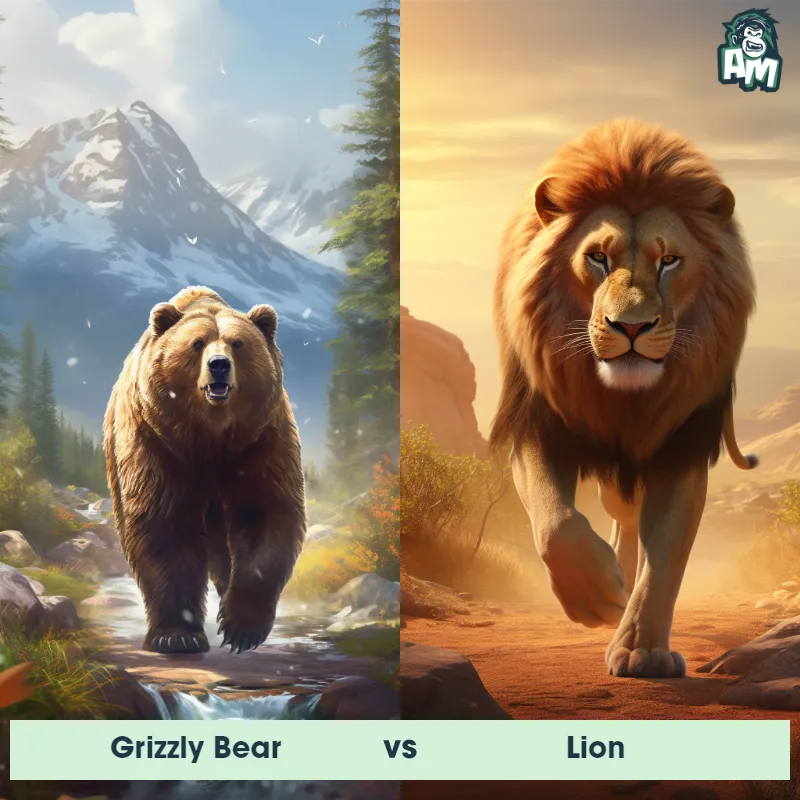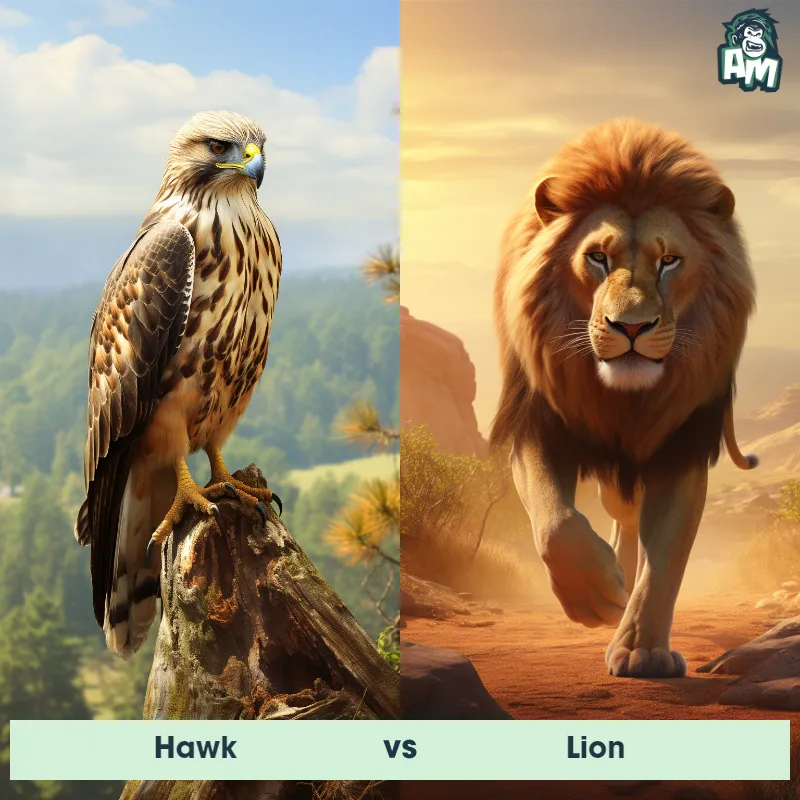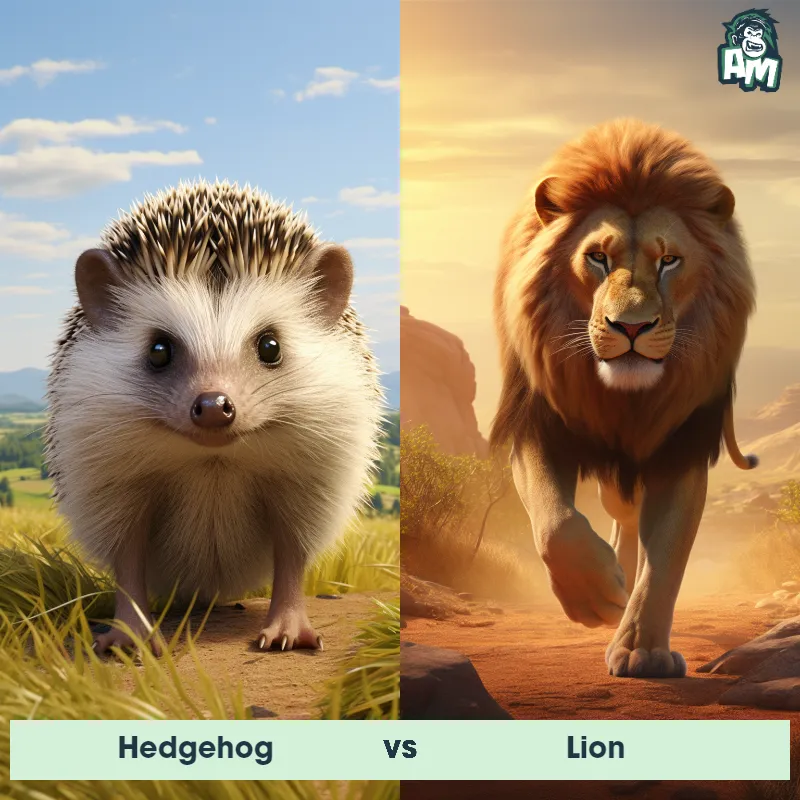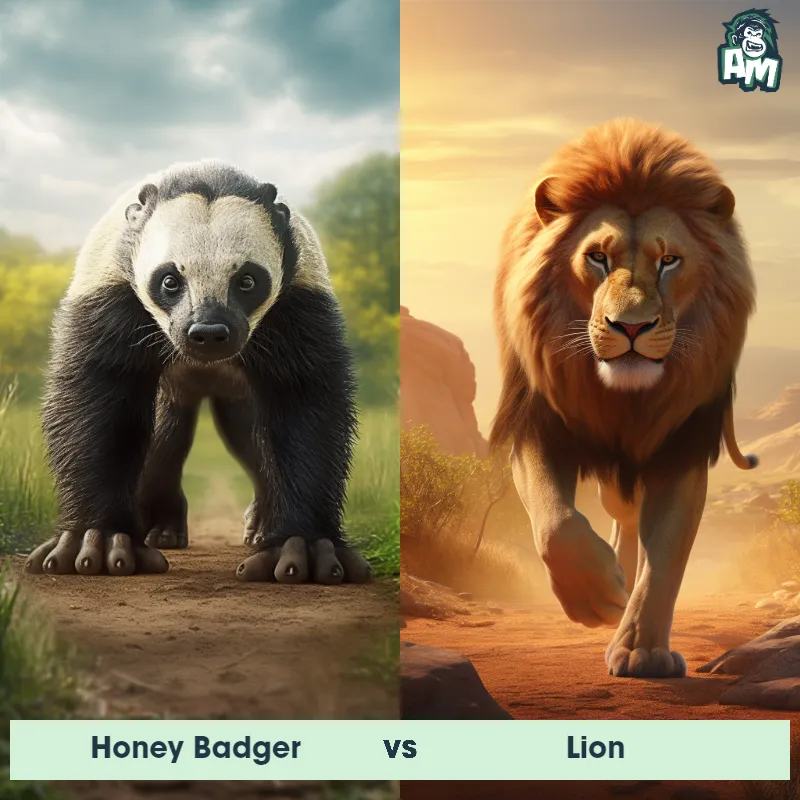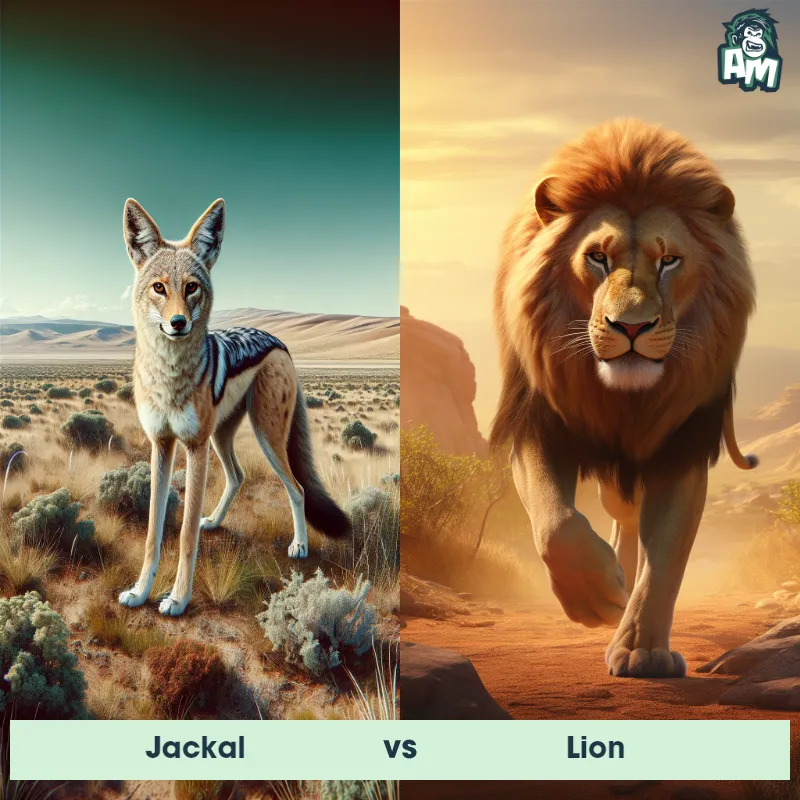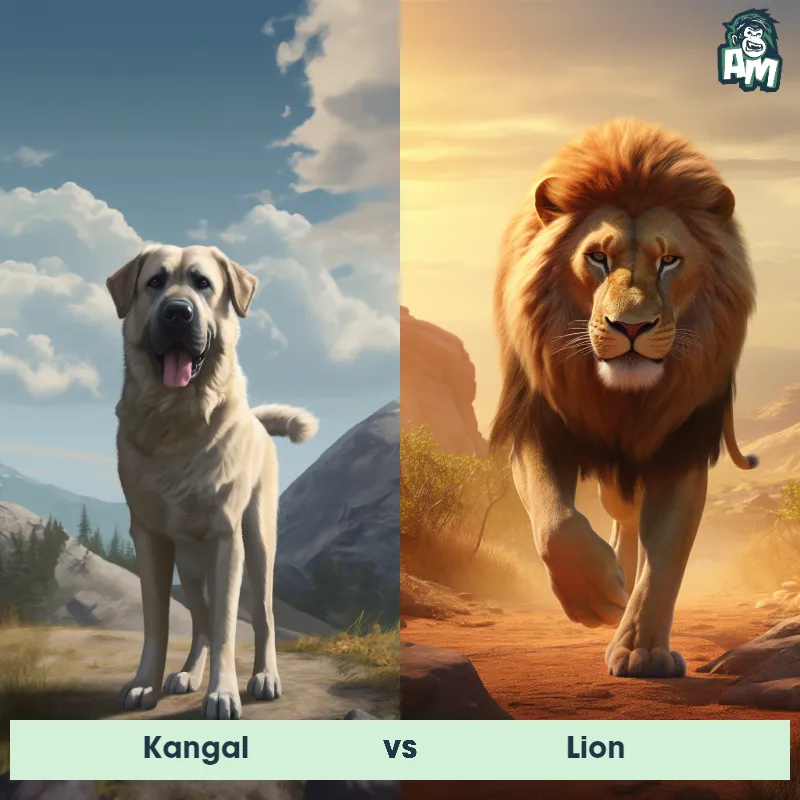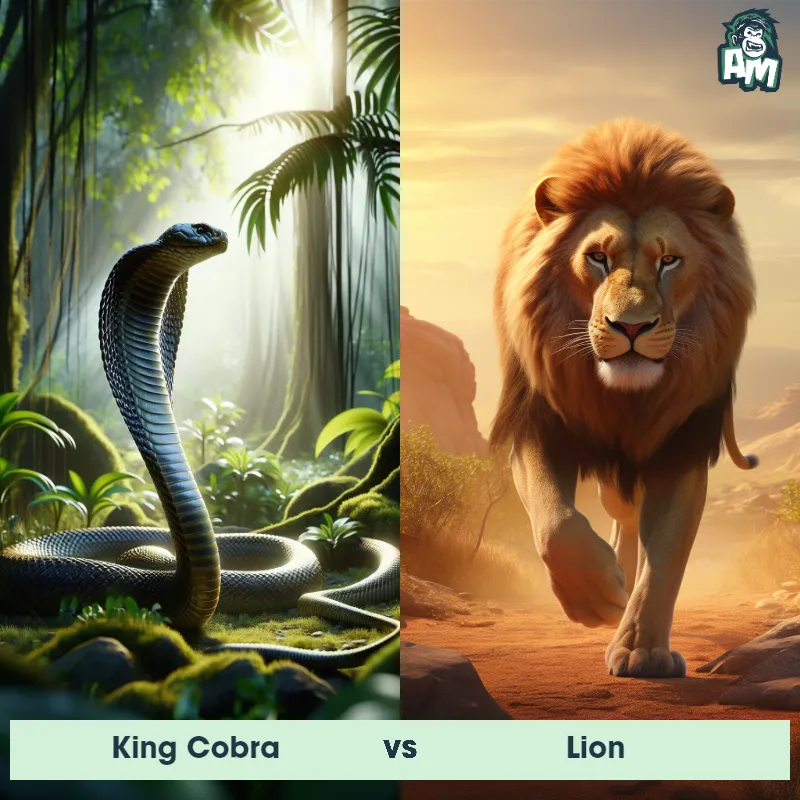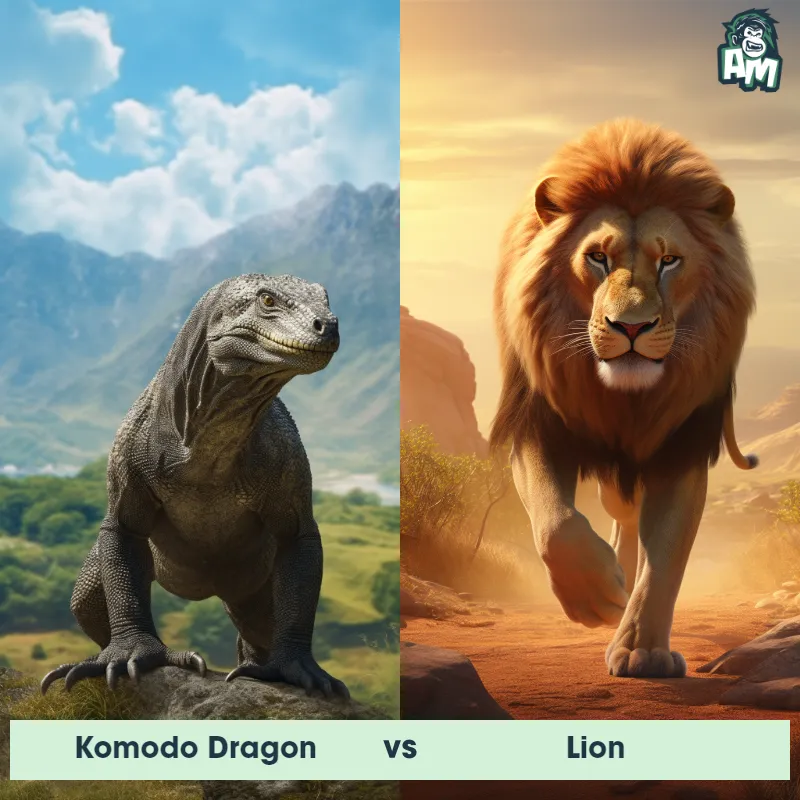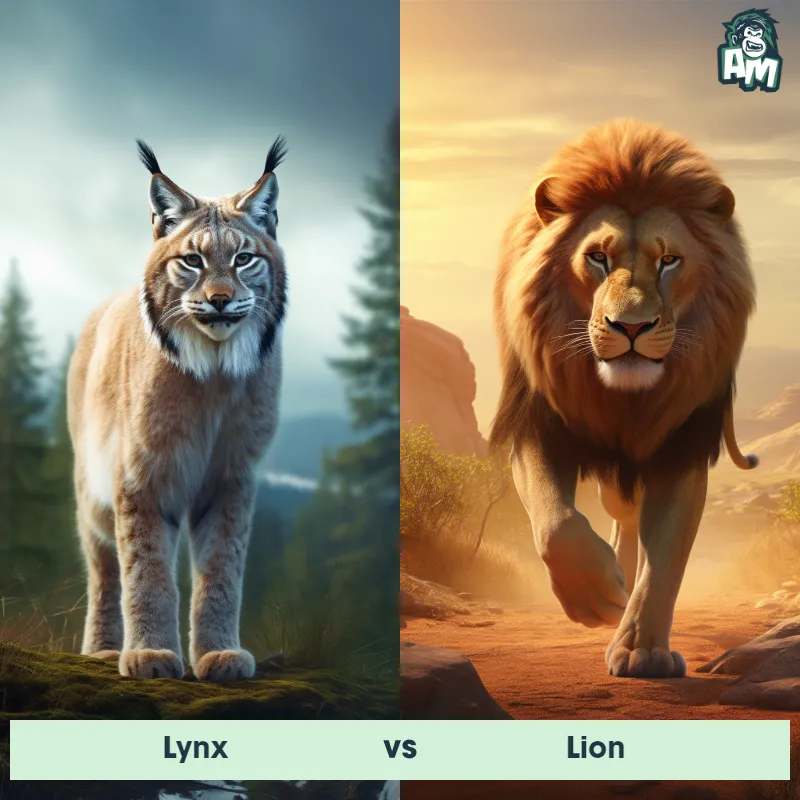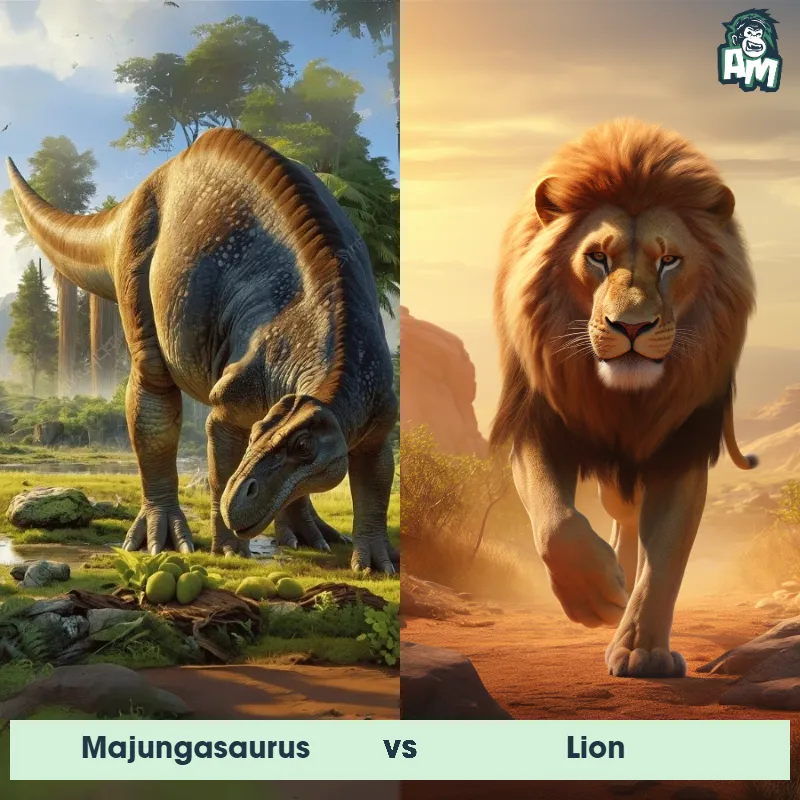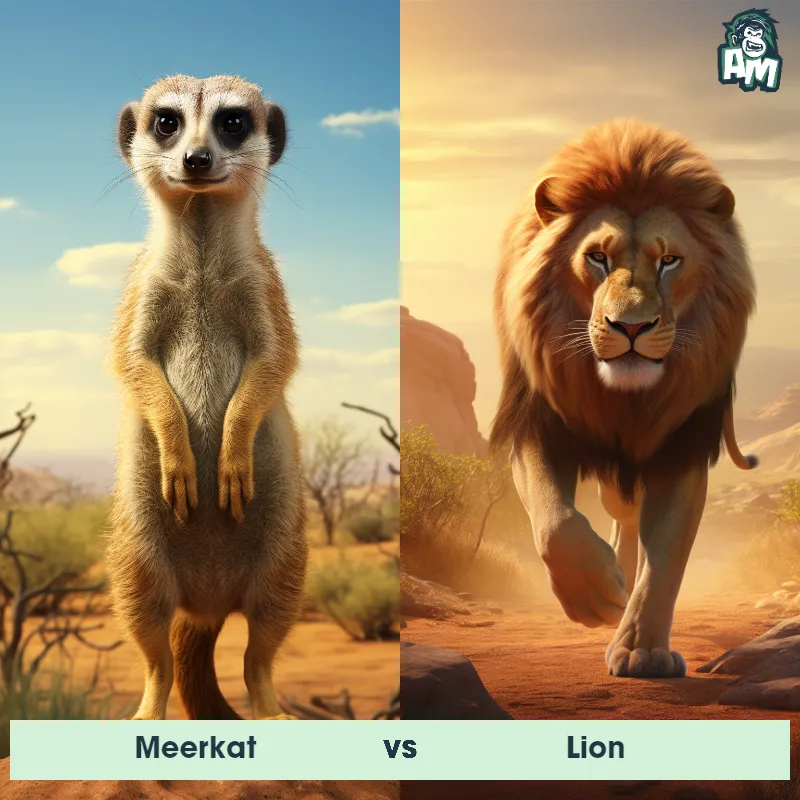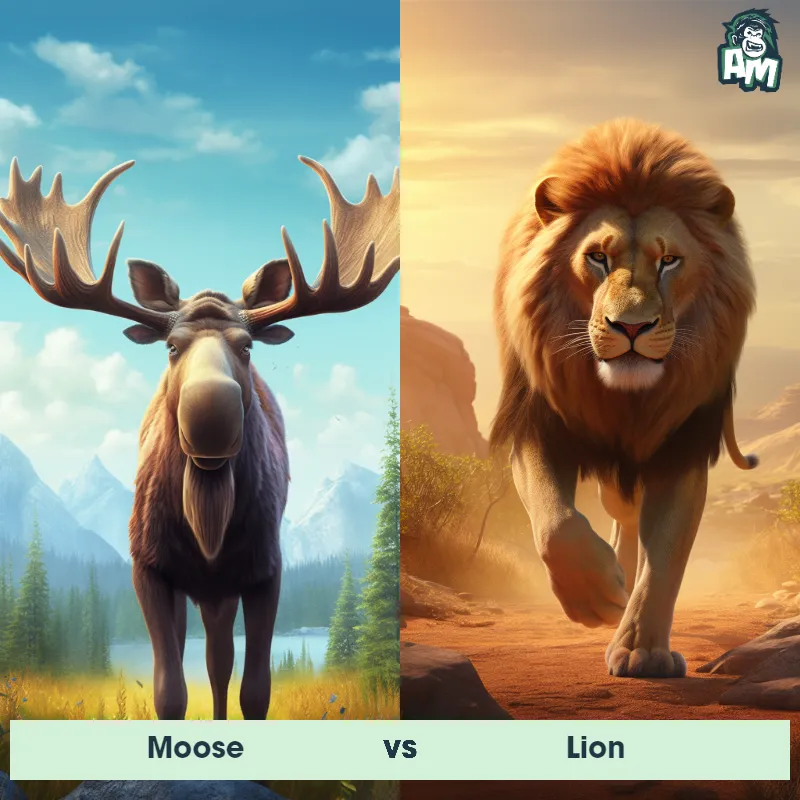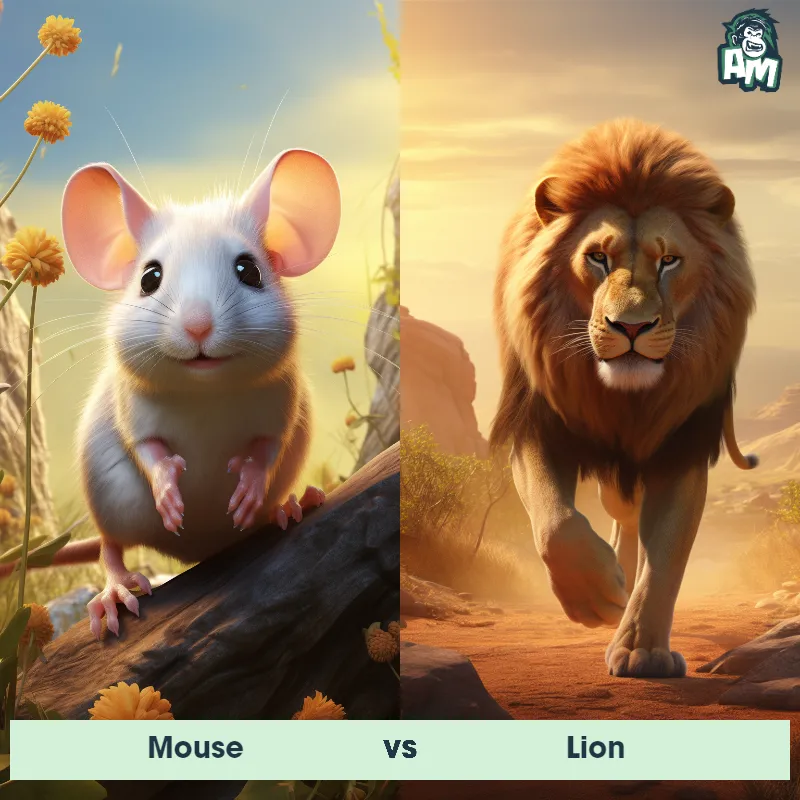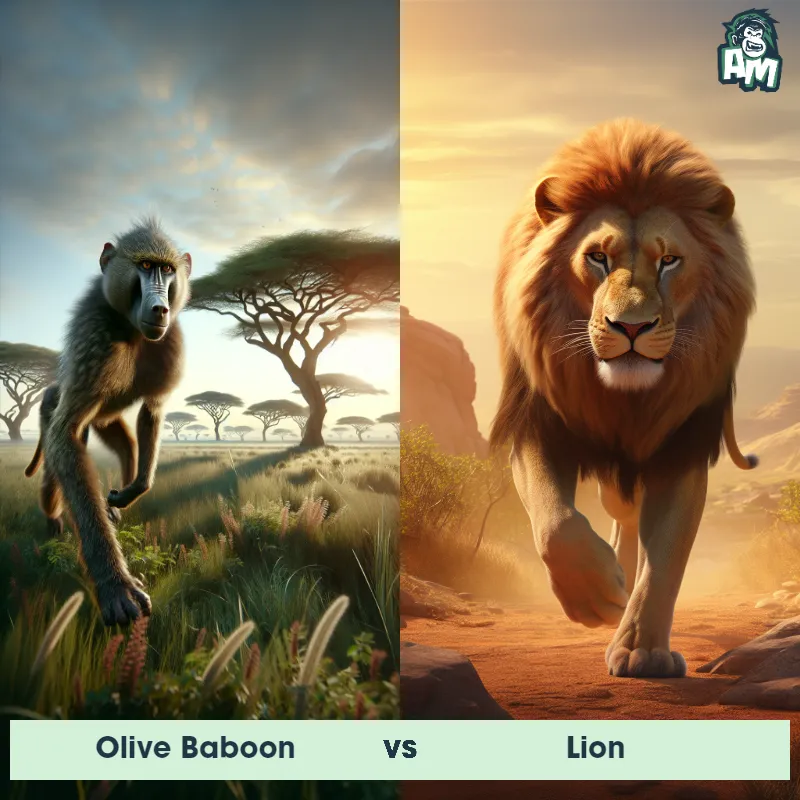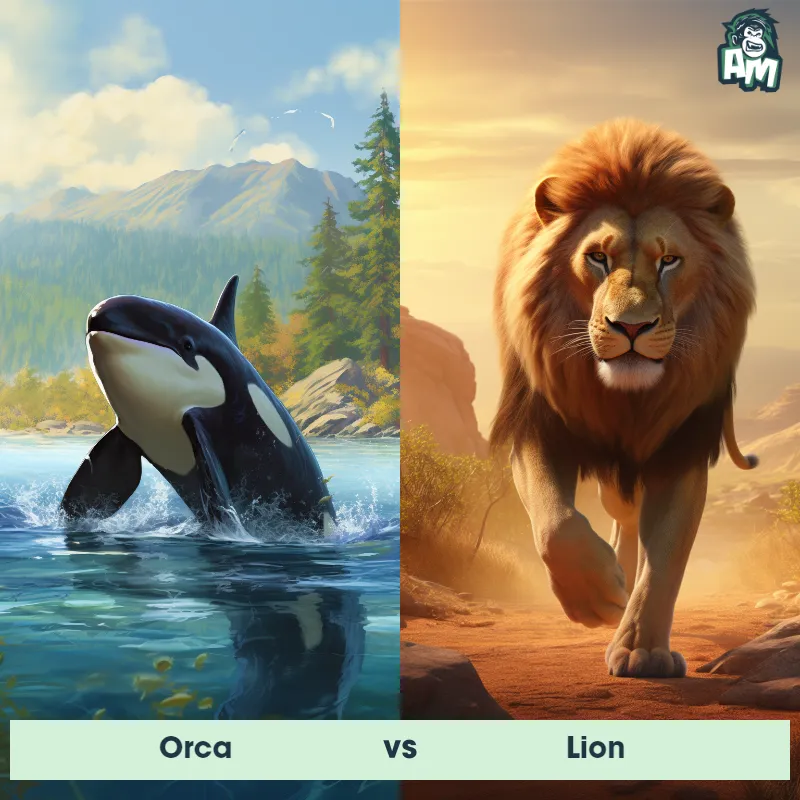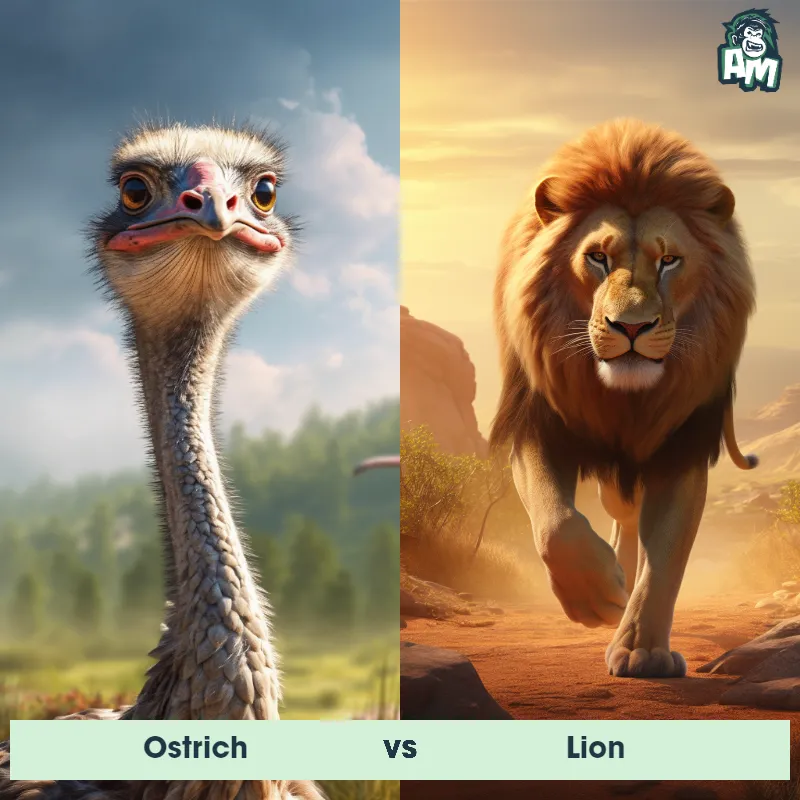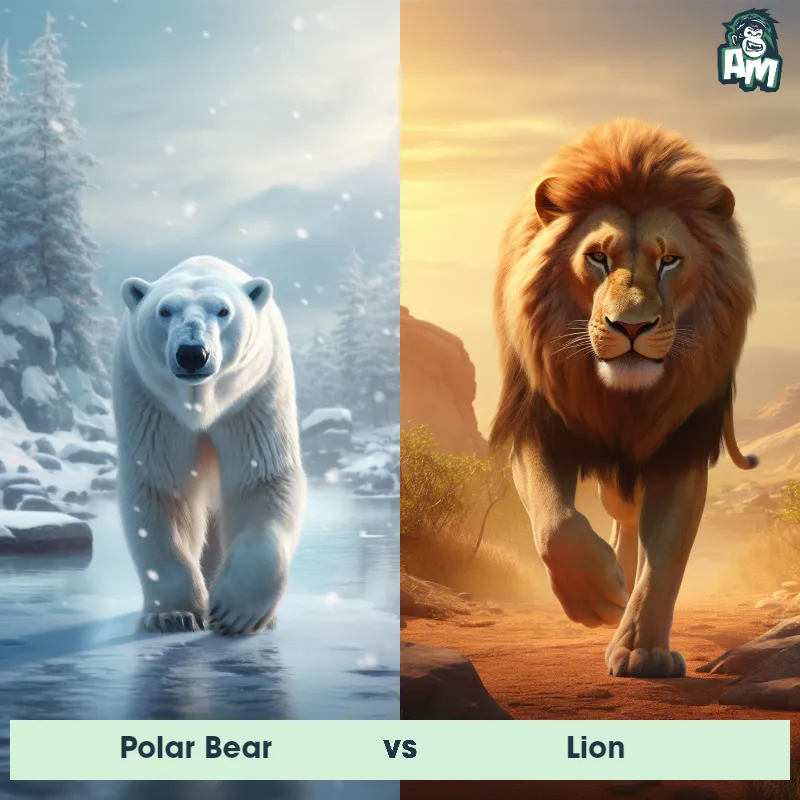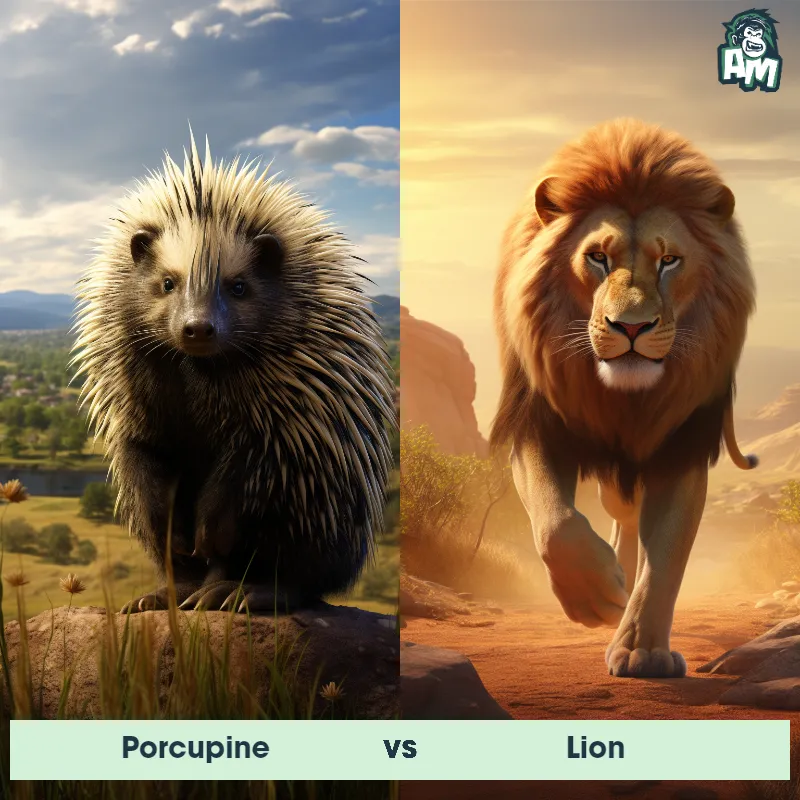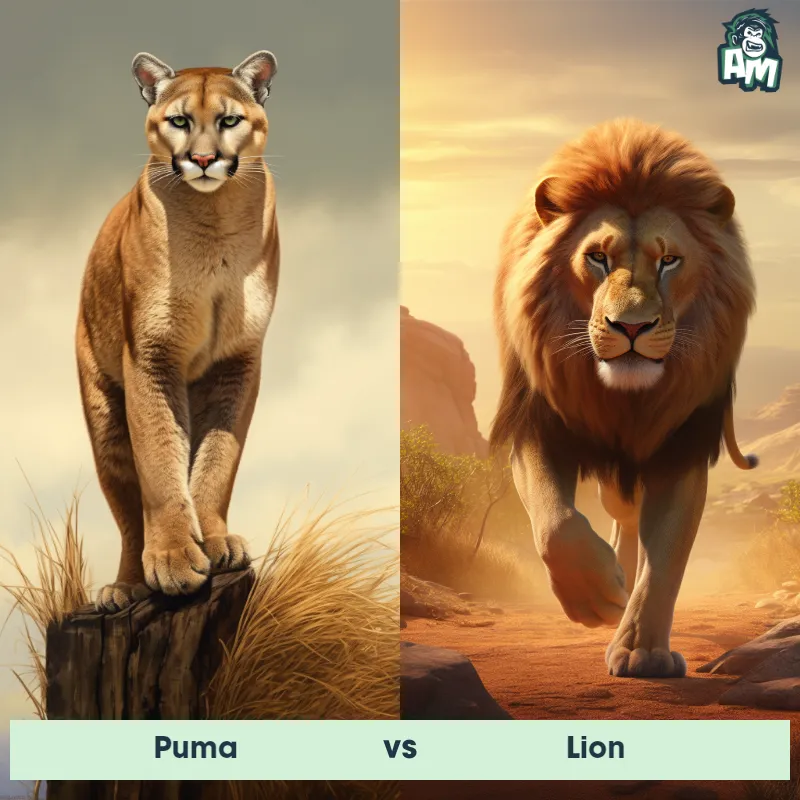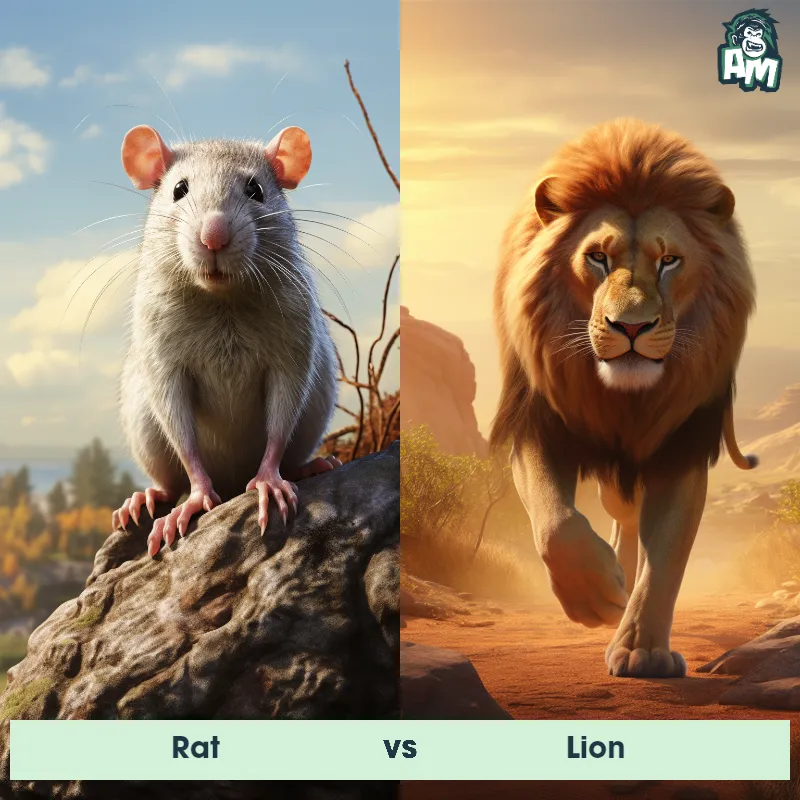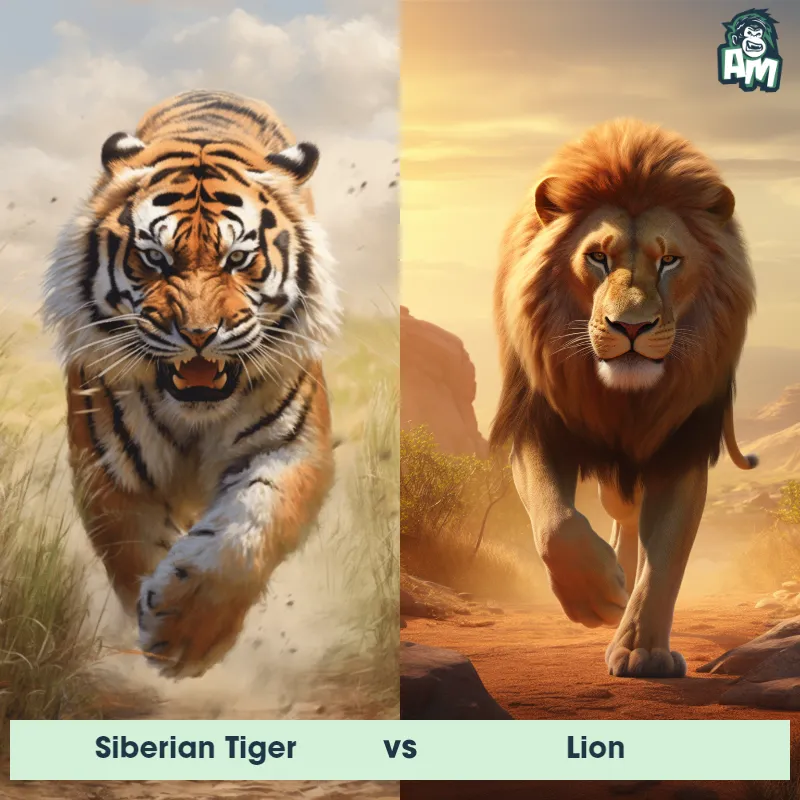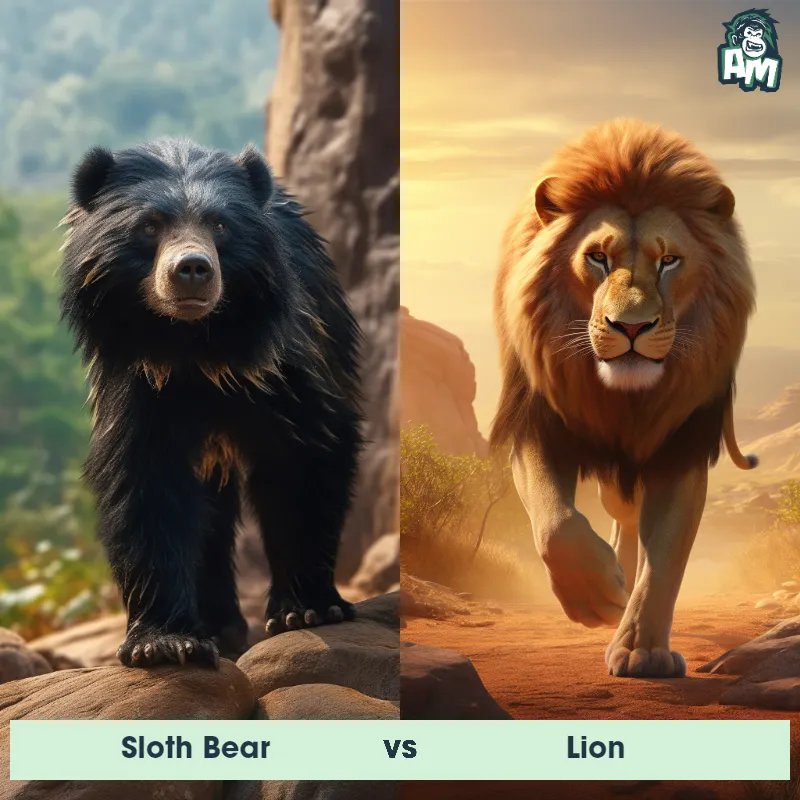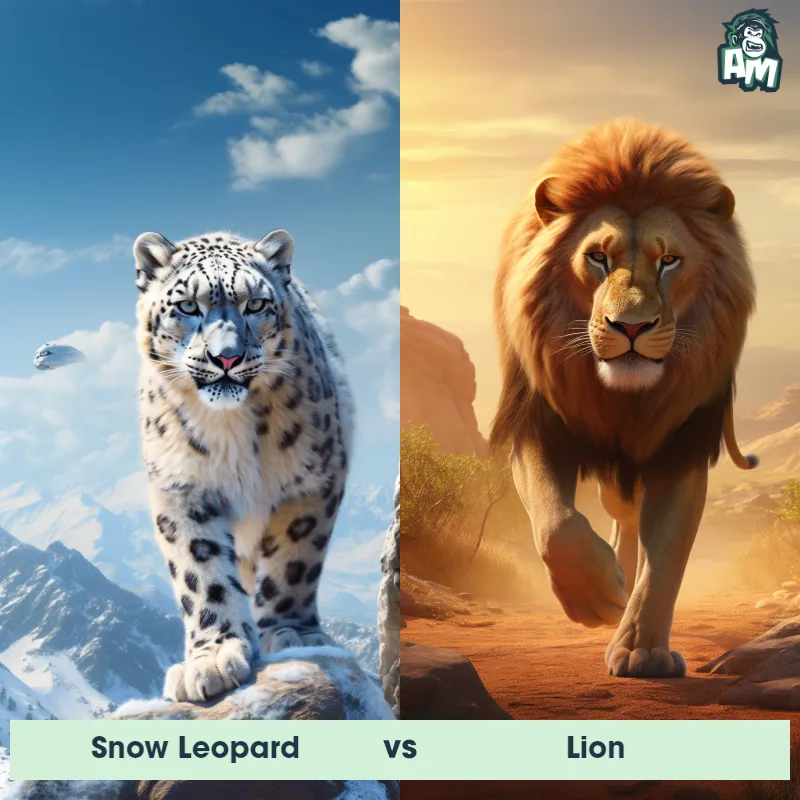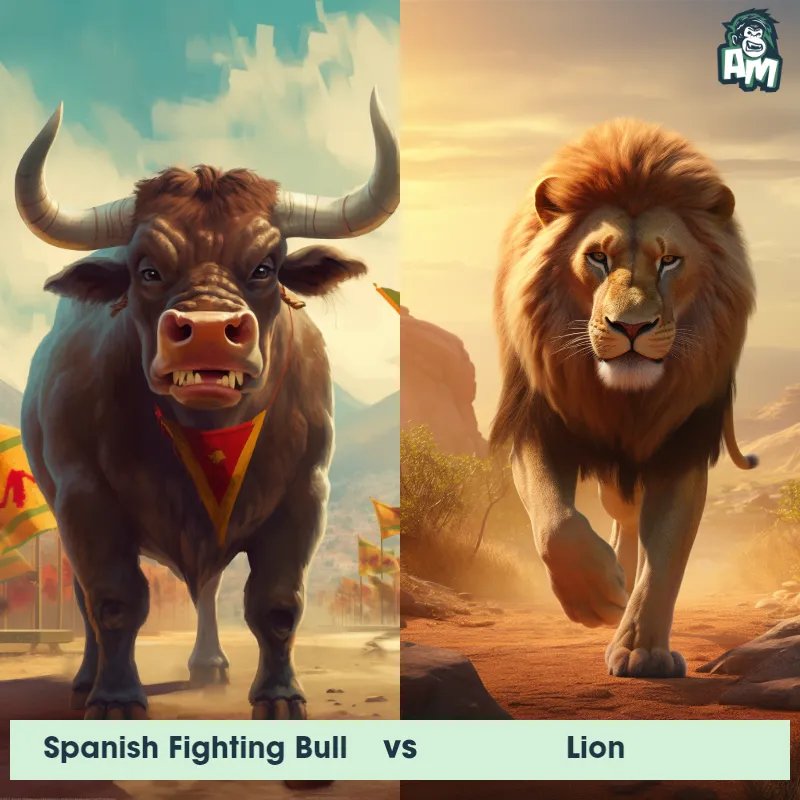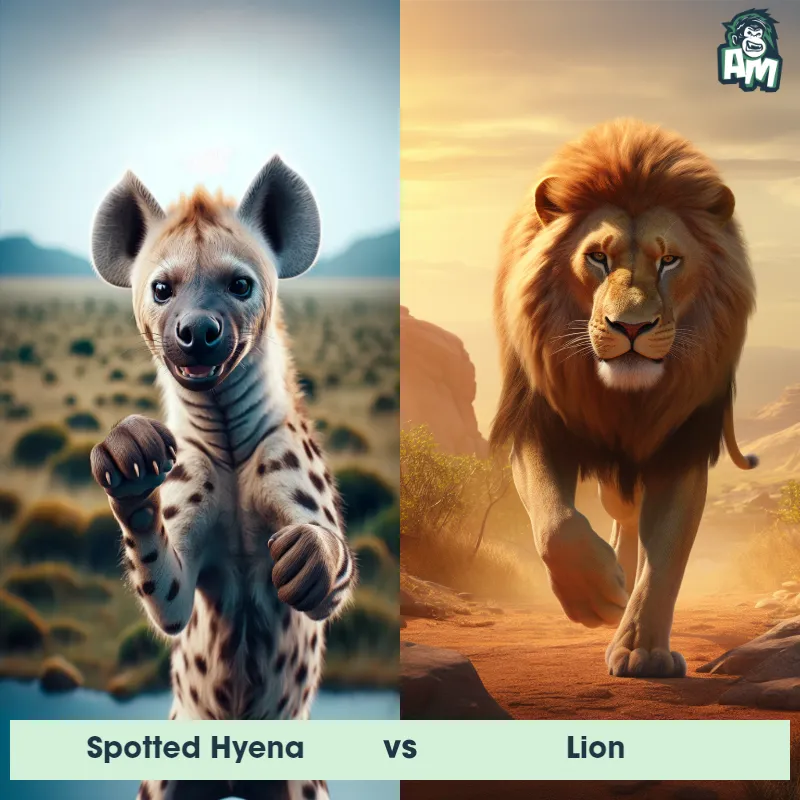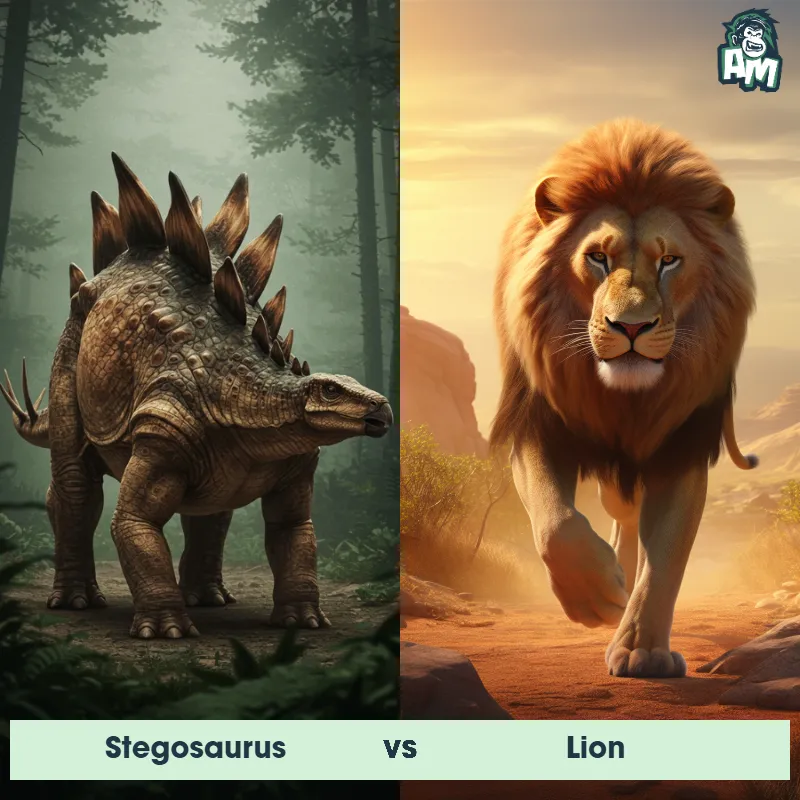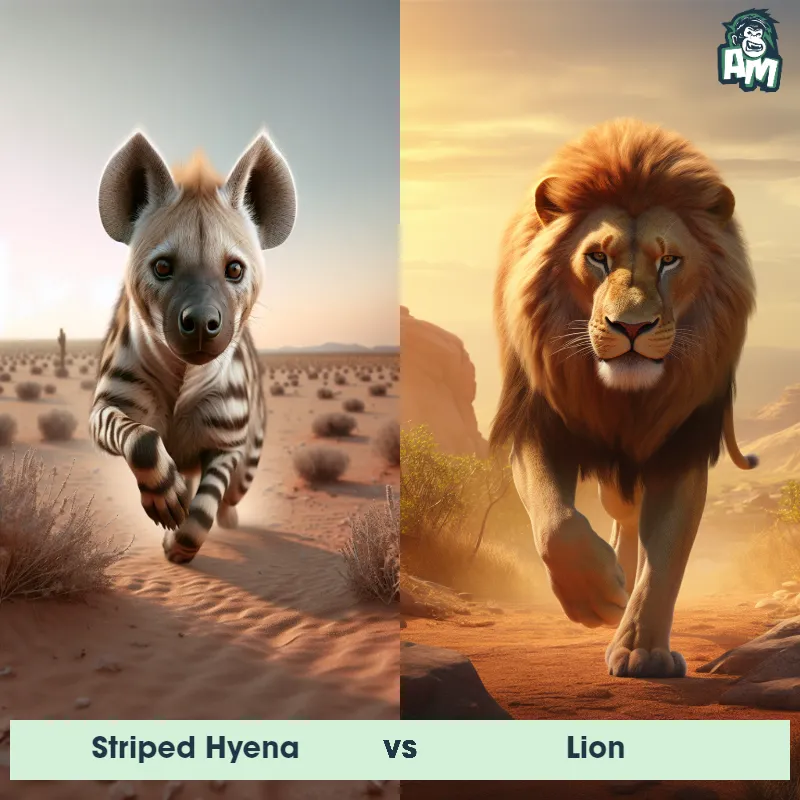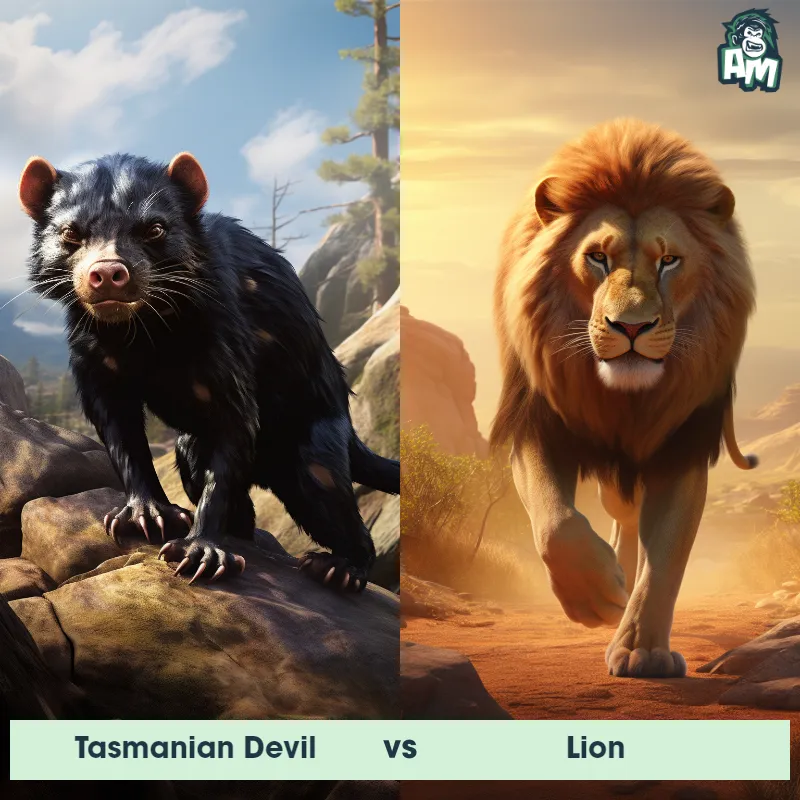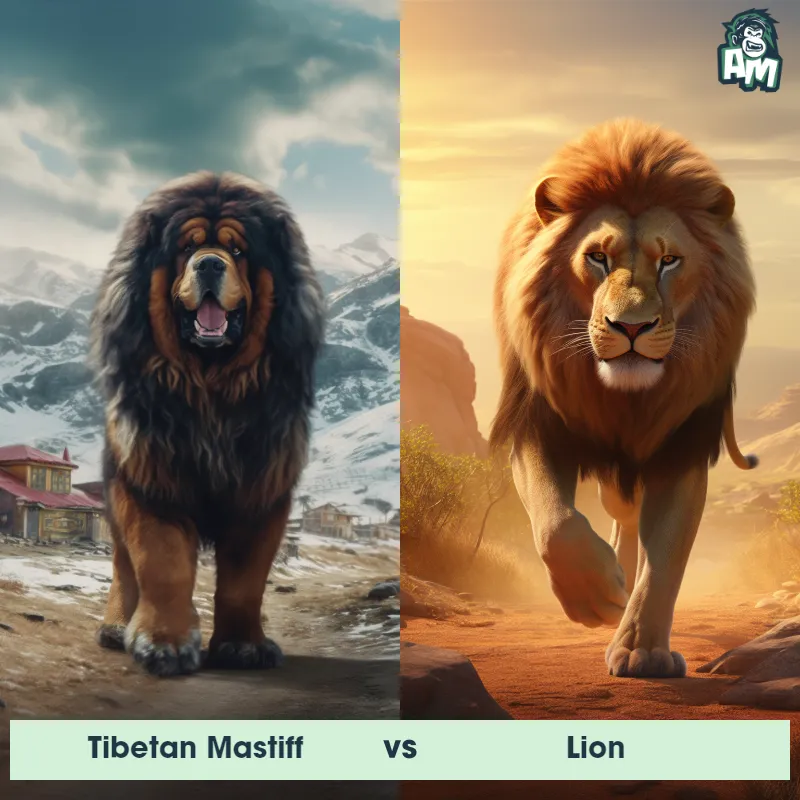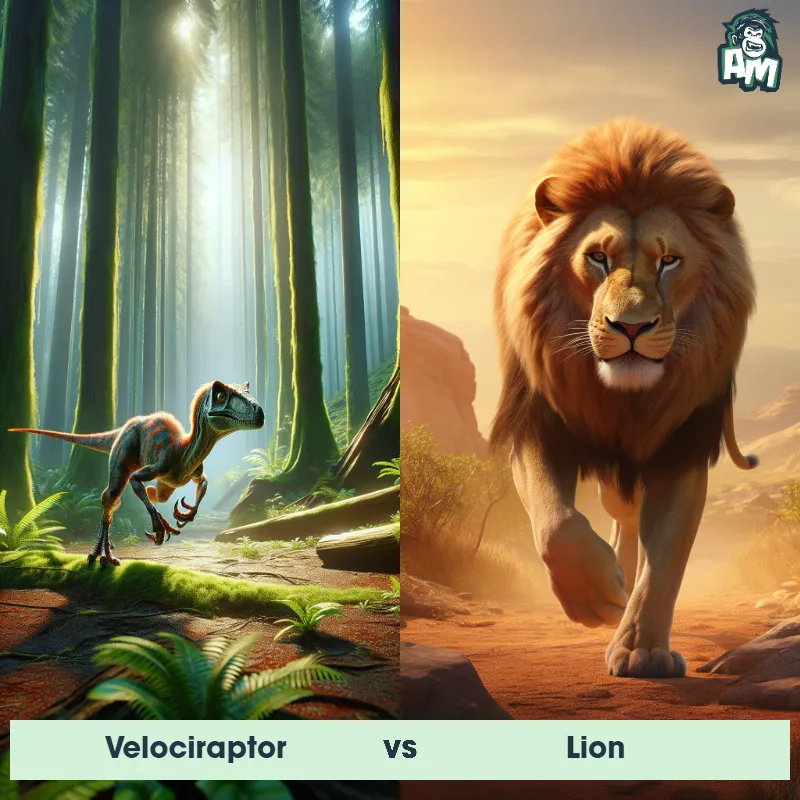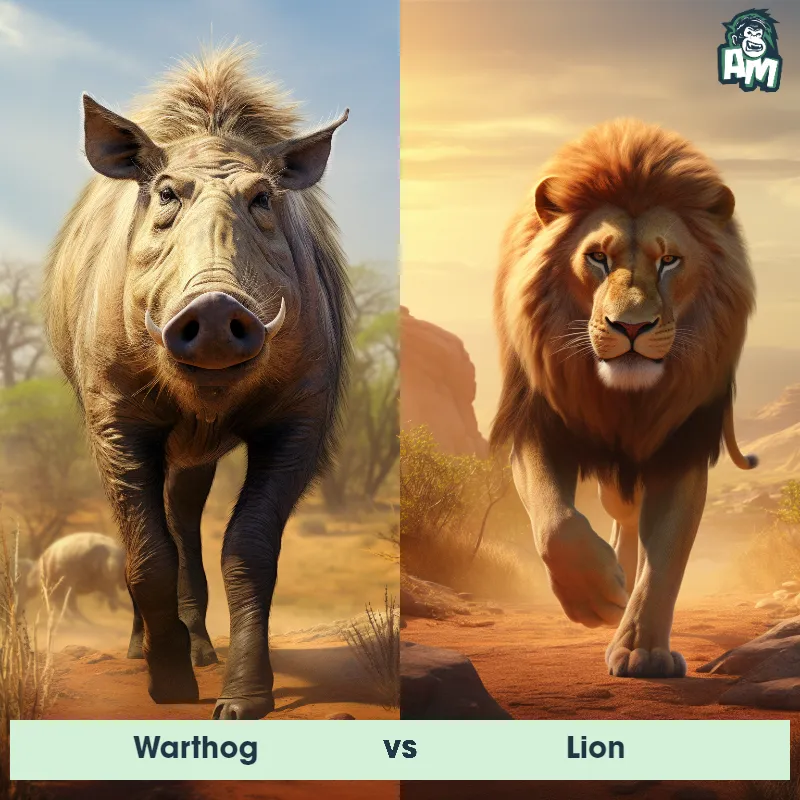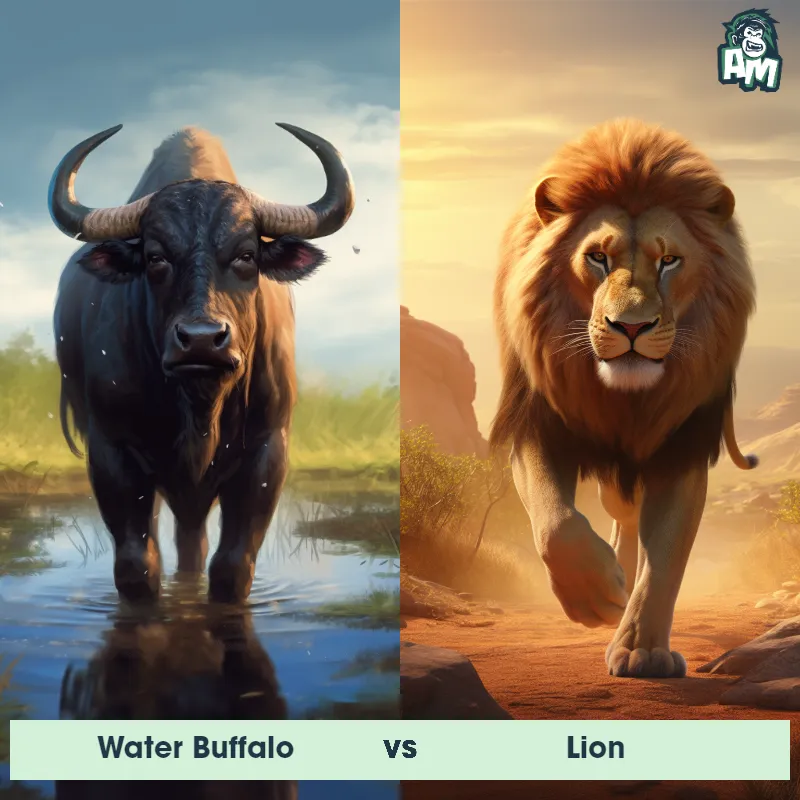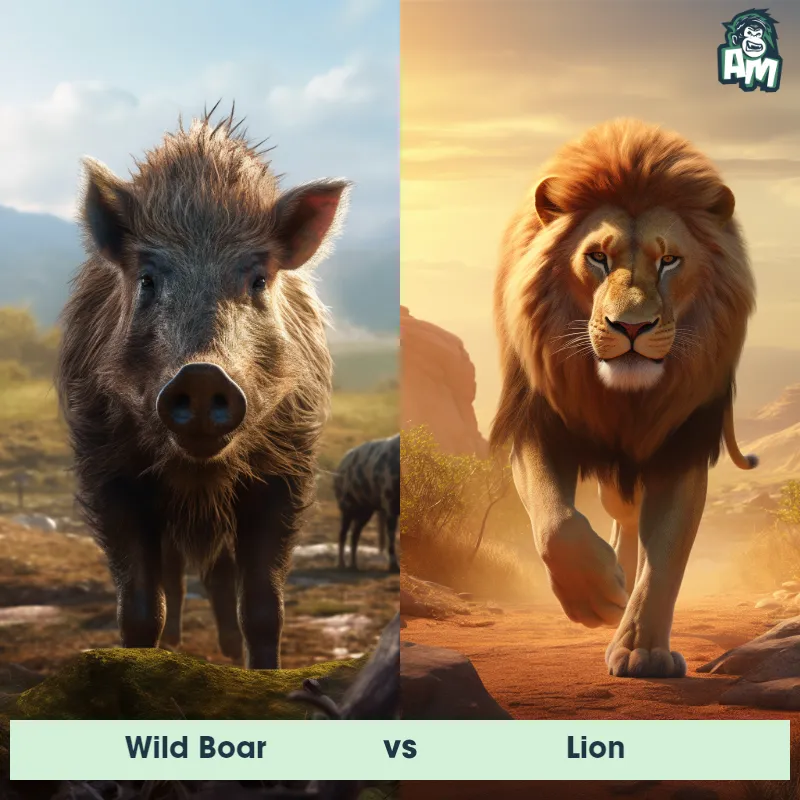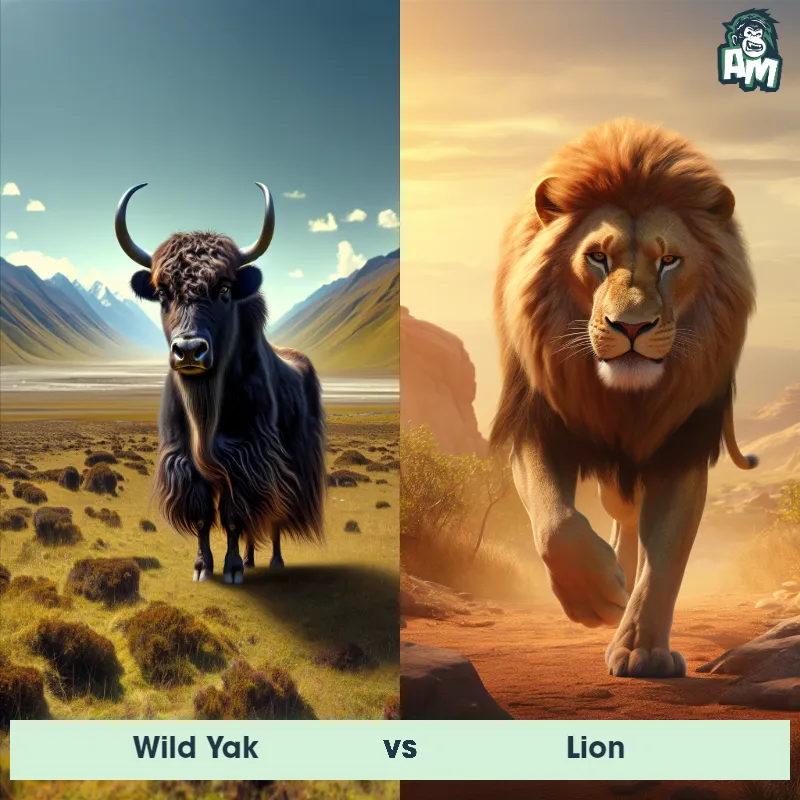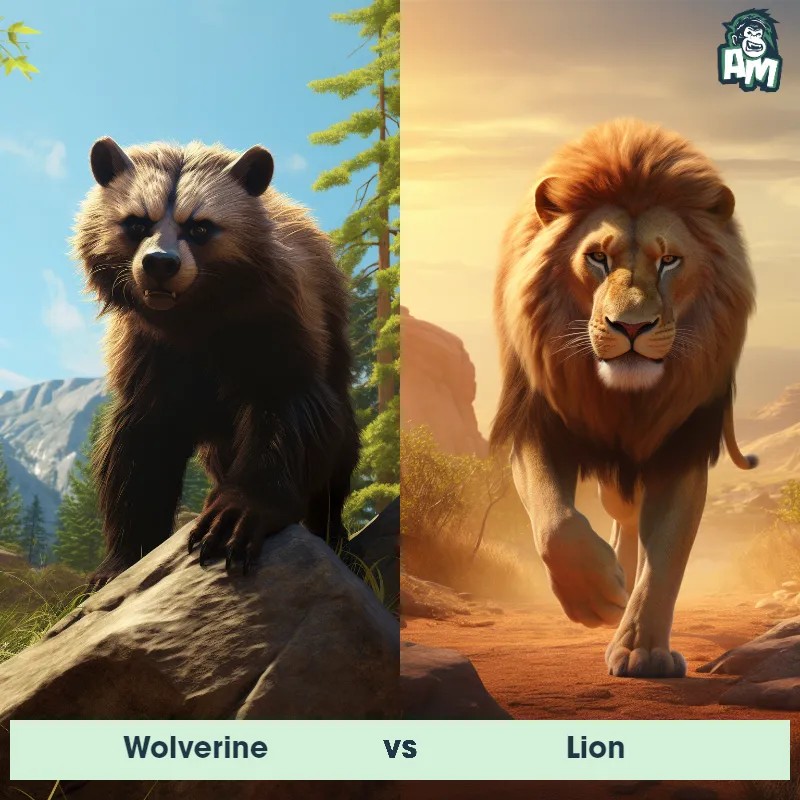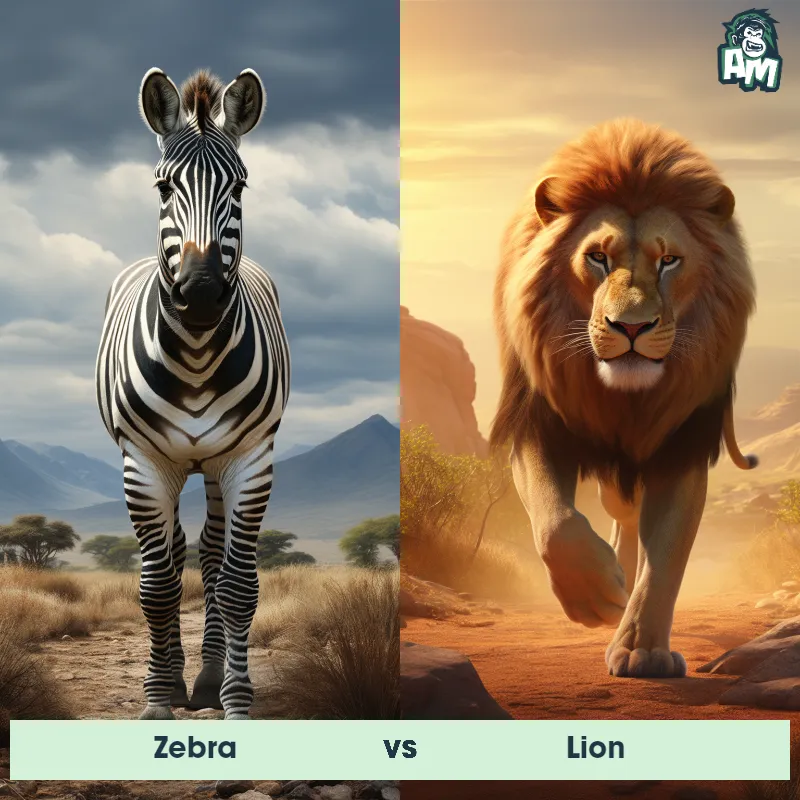The Lion
The lion, scientifically known as Panthera leo, is a large, muscular carnivorous mammal native to Africa and some parts of Asia. Lions are known for their distinctive golden-brown fur, which is shorter on the head and neck and longer and darker on the body and tail. Adult males typically have a majestic mane, which varies in color from blonde to black and provides them with a regal appearance. Lions possess sharp retractable claws and powerful jaws, making them highly skilled hunters. They live in social groups called prides, consisting of related females and their offspring, while adult males form bachelor groups or roam alone. The average lifespan of a lion is around 10-14 years in the wild and up to 20 years in captivity.
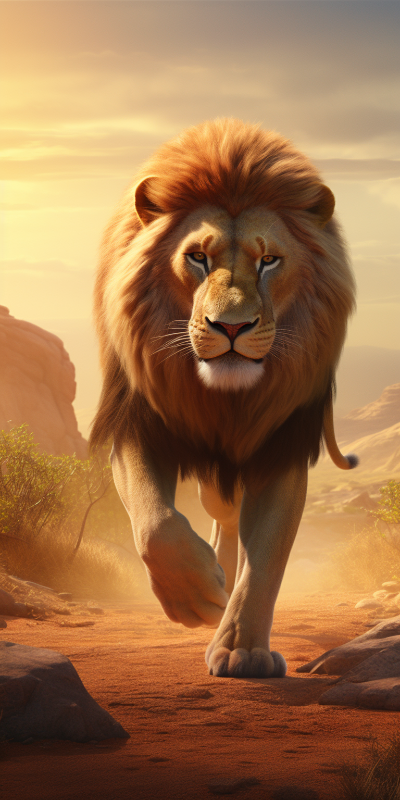
| Lion | |
|---|---|
| Size | 4.5 to 6.5 feet long (body length), 3.5 to 4 feet tall at the shoulder (1.4 to 2 meters long, 1 to 1.2 meters tall) |
| Weight | Up to 420 pounds (190 kilograms) |
| Speed | 50mph (80km/h) |
| Key Strength | Powerful build, strong jaws, sharp claws |
| Biggest Weakness | Less agile compared to other big cats, dependent on strength and power |
| Scientific Name | Panthera leo |
| Family | Felidae |
| Habitat | Grasslands, savannas, dense bush, and woodlands |
| Geography | Africa and a small region in western India |
| Diet | Carnivorous, primarily large ungulates |
| Lifespan | 10 years - 14 years |

The Lion
The lion, scientifically known as Panthera leo, is a large, muscular carnivorous mammal native to Africa and some parts of Asia. Lions are known for their distinctive golden-brown fur, which is shorter on the head and neck and longer and darker on the body and tail. Adult males typically have a majestic mane, which varies in color from blonde to black and provides them with a regal appearance. Lions possess sharp retractable claws and powerful jaws, making them highly skilled hunters. They live in social groups called prides, consisting of related females and their offspring, while adult males form bachelor groups or roam alone. The average lifespan of a lion is around 10-14 years in the wild and up to 20 years in captivity.
![[object Object] Gif](https://tenor.com/view/lion-yawning-yawn-tired-exhausted-gif-12230852.gif)
Fun Fact: Lions are the only cats that live in a social group known as a pride, which can consist of up to 40 members, including multiple adult males, females, and their cubs.
| Lion | |
|---|---|
| Size | 4.5 to 6.5 feet long (body length), 3.5 to 4 feet tall at the shoulder (1.4 to 2 meters long, 1 to 1.2 meters tall) |
| Weight | Up to 420 pounds (190 kilograms) |
| Speed | 50mph (80km/h) |
| Key Strength | Powerful build, strong jaws, sharp claws |
| Biggest Weakness | Less agile compared to other big cats, dependent on strength and power |
| Scientific Name | Panthera leo |
| Family | Felidae |
| Habitat | Grasslands, savannas, dense bush, and woodlands |
| Geography | Africa and a small region in western India |
| Diet | Carnivorous, primarily large ungulates |
| Lifespan | 10 years - 14 years |
Match Highlights
Lion Matchups
We use AI to simulate matchups between the Lion and other animals. Our simulation considers size, strength, and natural predatory behaviors to determine the most likely outcome.
Lion: Diet, Predators, Aggression, and Defensive Behaviors
What do lions eat?
Lions are carnivorous apex predators, meaning they primarily feed on other animals. Their diet consists mainly of large herbivores such as zebras, buffalos, and wildebeests. They will also prey on smaller animals like hares and birds when the opportunity arises.
Do lions have any predators?
Although adult lions do not have many predators in the wild, they may face threats from other large carnivores such as hyenas, leopards, and crocodiles. These predators may attempt to steal a lion's kill or even attack lion cubs when given the chance.
Are lions aggressive?
Lions are known for their territorial and social behaviors, which can sometimes result in aggression towards other animals, including other lions. However, they are not inherently aggressive towards humans unless provoked or threatened.
Do lions fight?
Lions are known to engage in fights, both within their own pride and with rival prides. These fights can be intense and can result in injuries or even death. Male lions, in particular, are known to fight for dominance within a pride.
How do lions defend themselves?
Lions have several strategies for defending themselves, including their strength and size, sharp claws and teeth, and their ability to work together as a pride. They may also use intimidation tactics such as roaring, charging, or displaying aggressive behavior towards perceived threats.
What is a lion's biggest weakness in a fight?
Despite being powerful predators, lions do have weaknesses in a fight. One of their biggest weaknesses is their vulnerability to injury, especially if their vital areas such as the face and neck are targeted by their opponent. Additionally, lions may struggle against larger predators or groups of predators that outnumber them.
Fun Fact: Despite being known as the 'King of the Jungle,' lions actually inhabit grasslands and plains, rather than jungle environments.
Fun Fact: Male lions often sleep for up to 20 hours a day, making them one of the laziest big cats.



